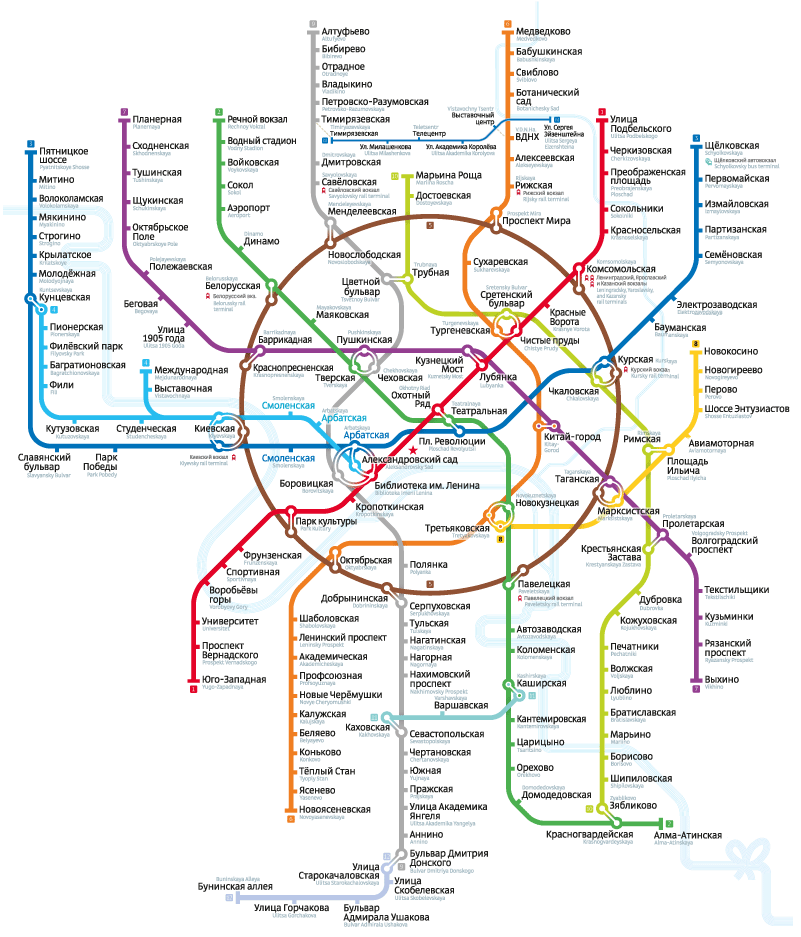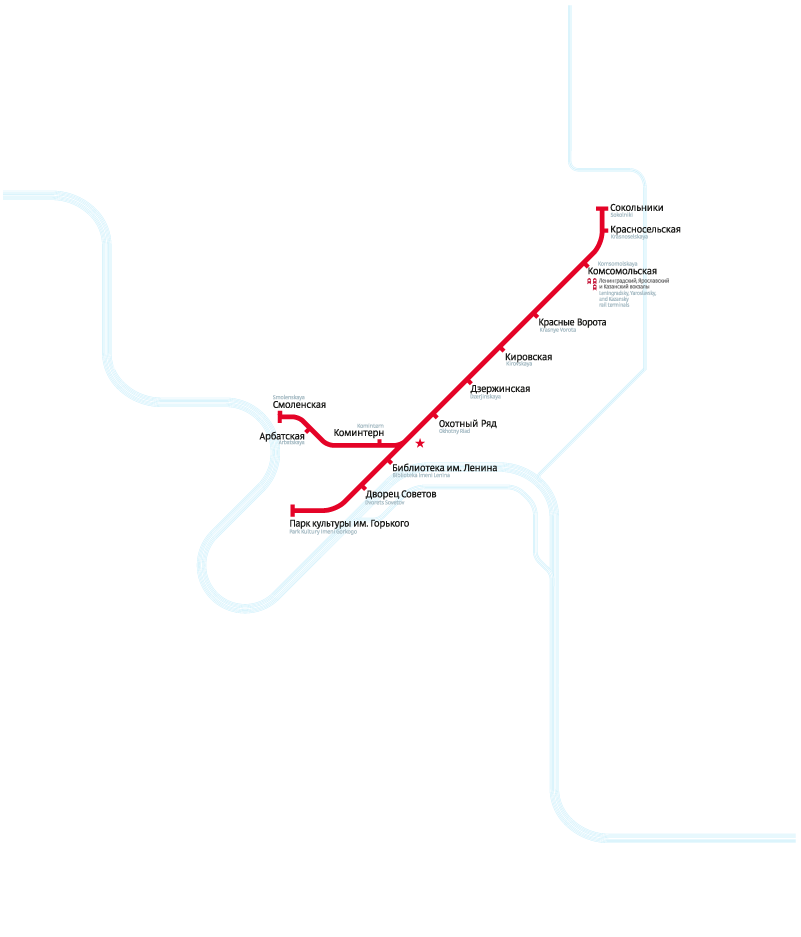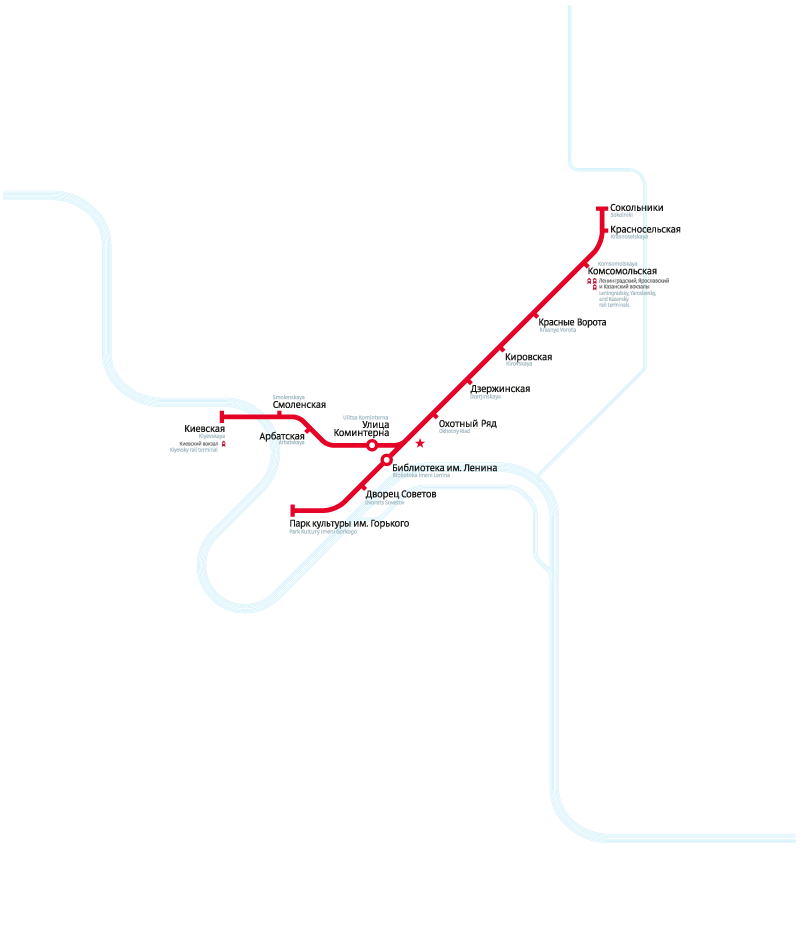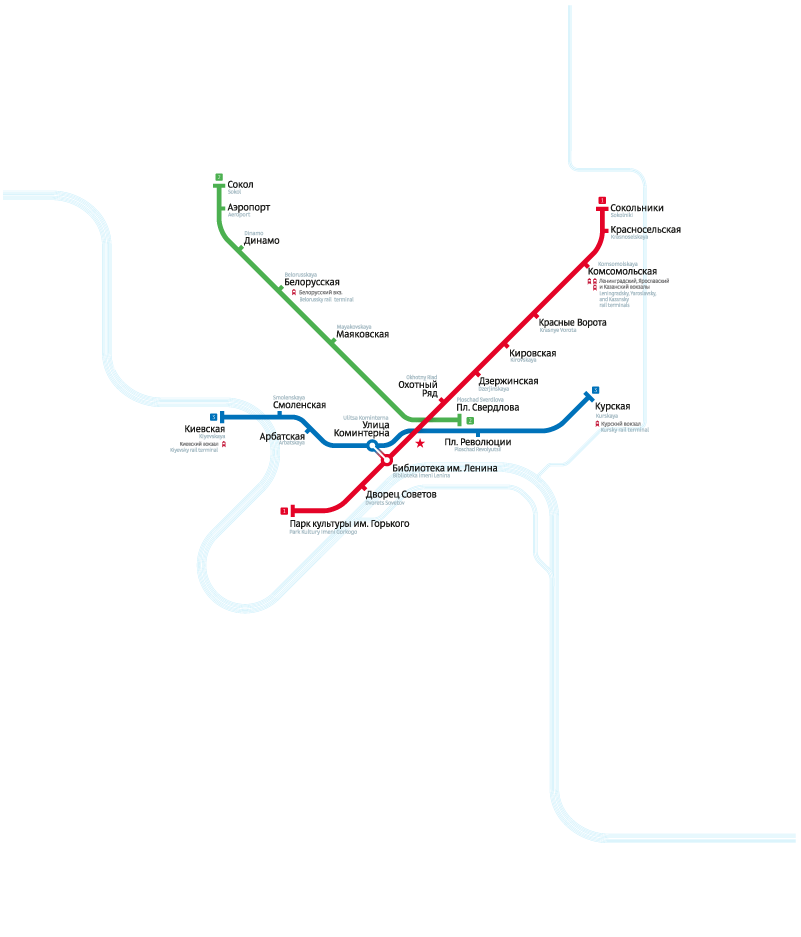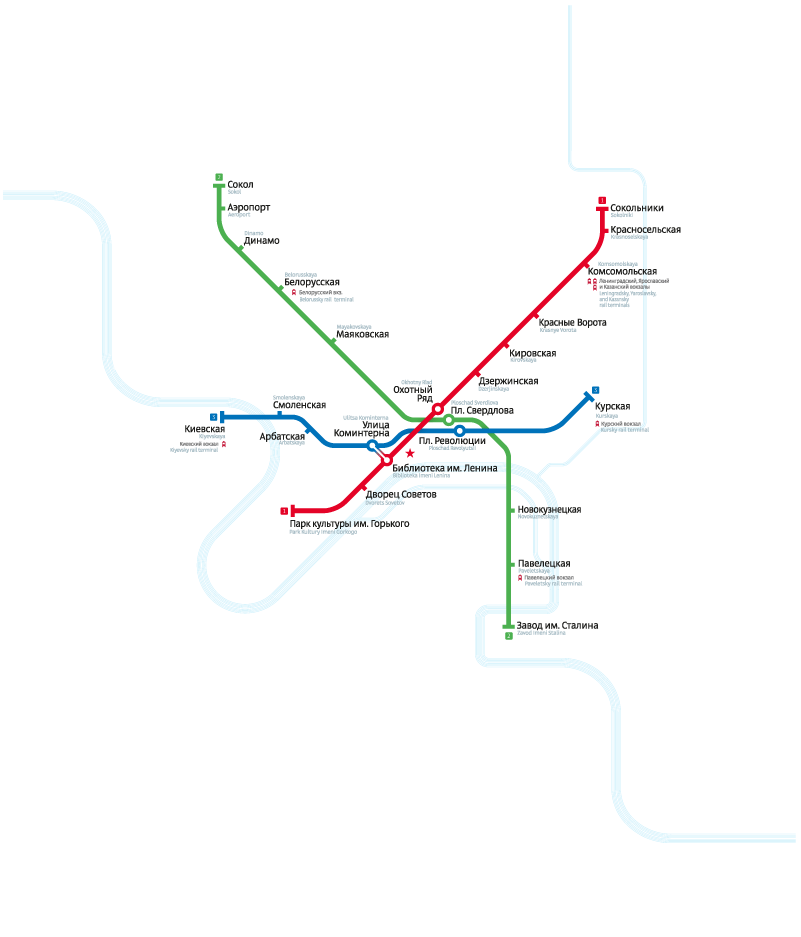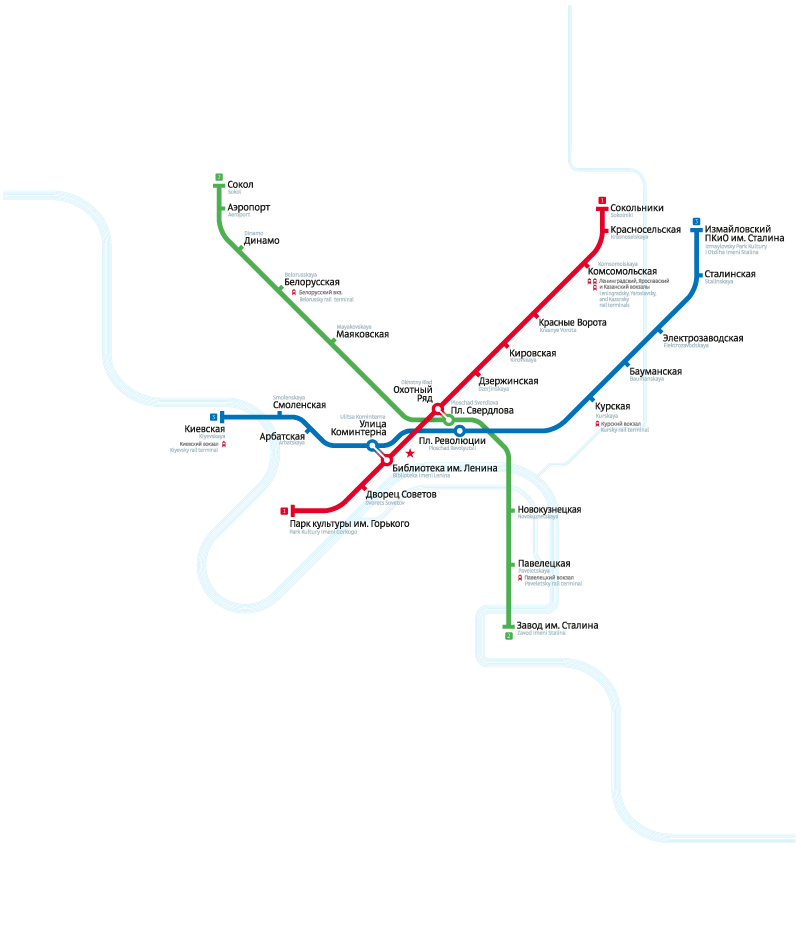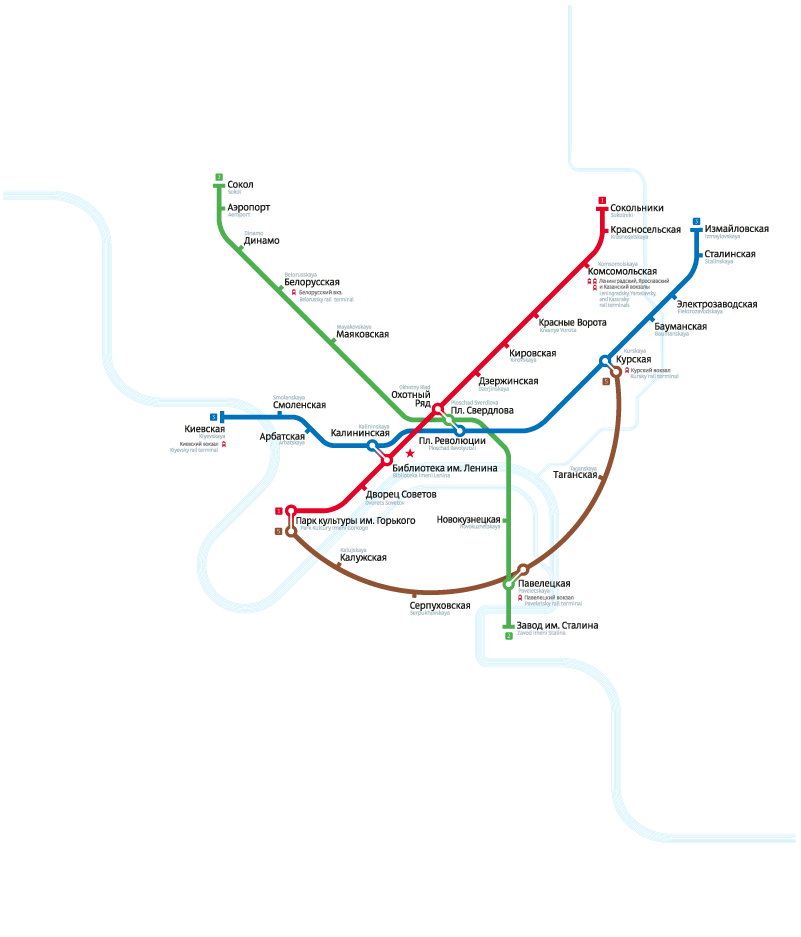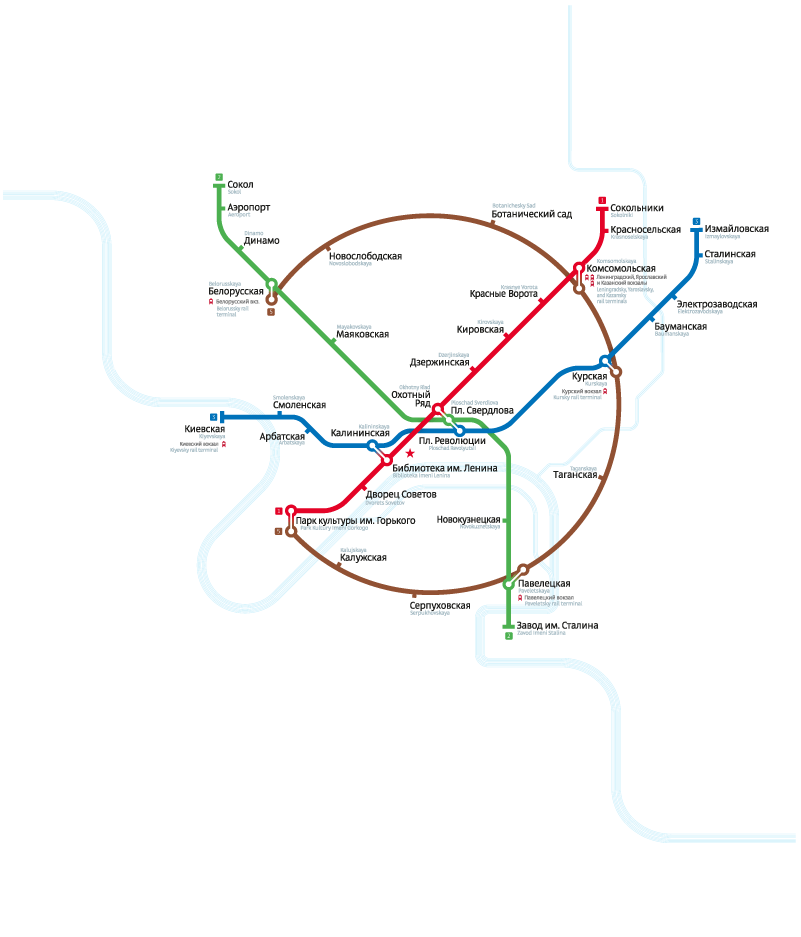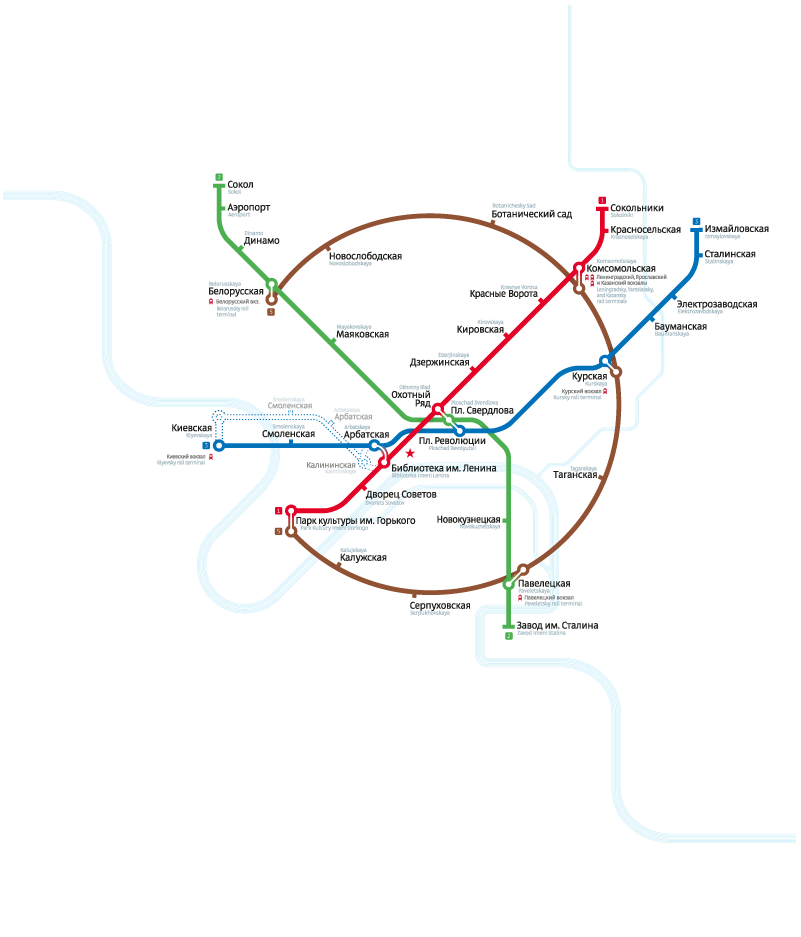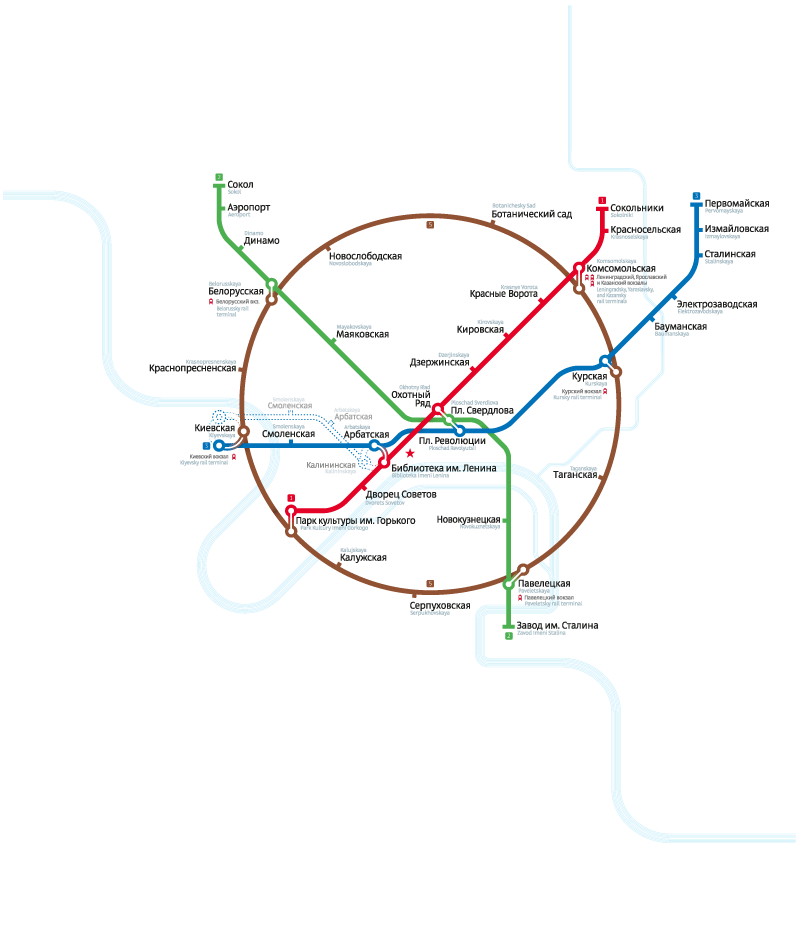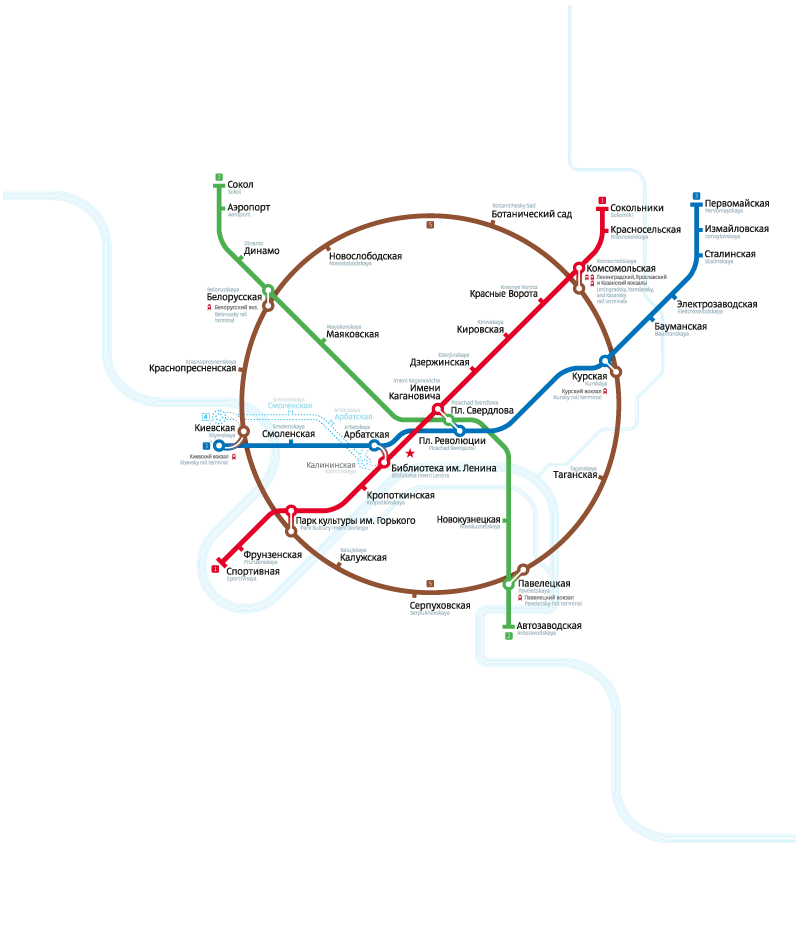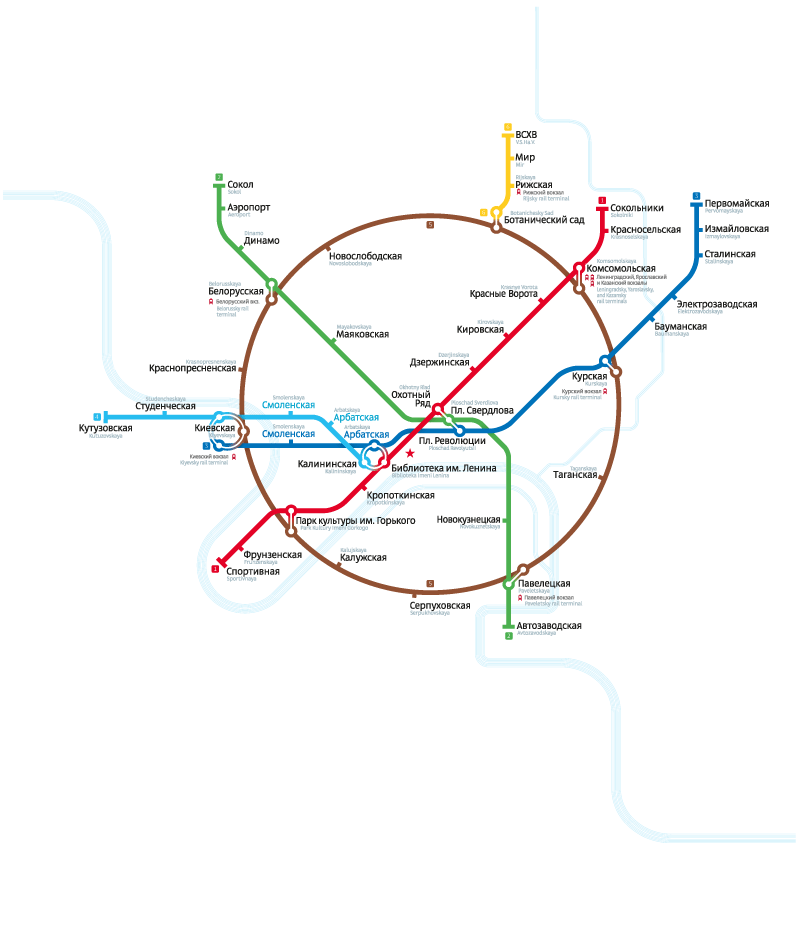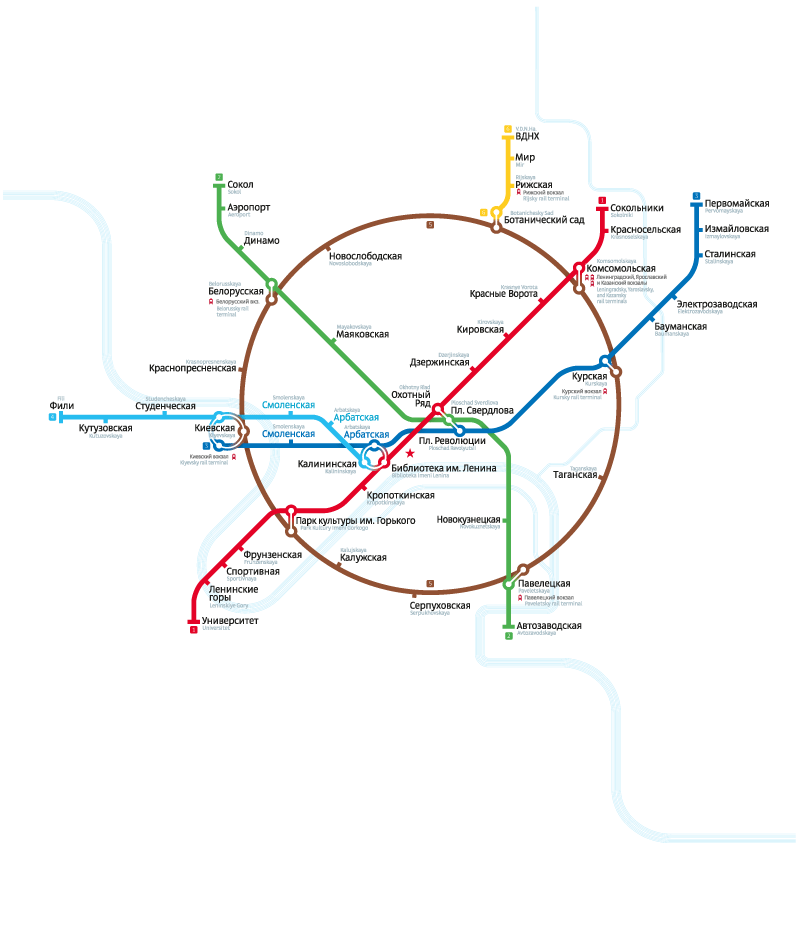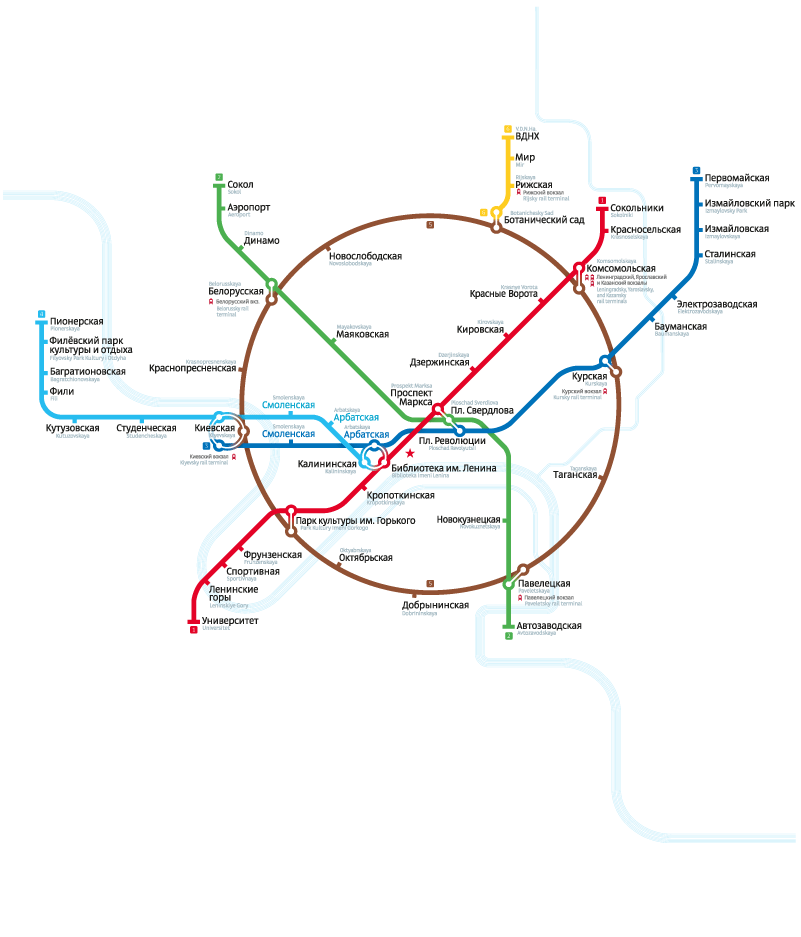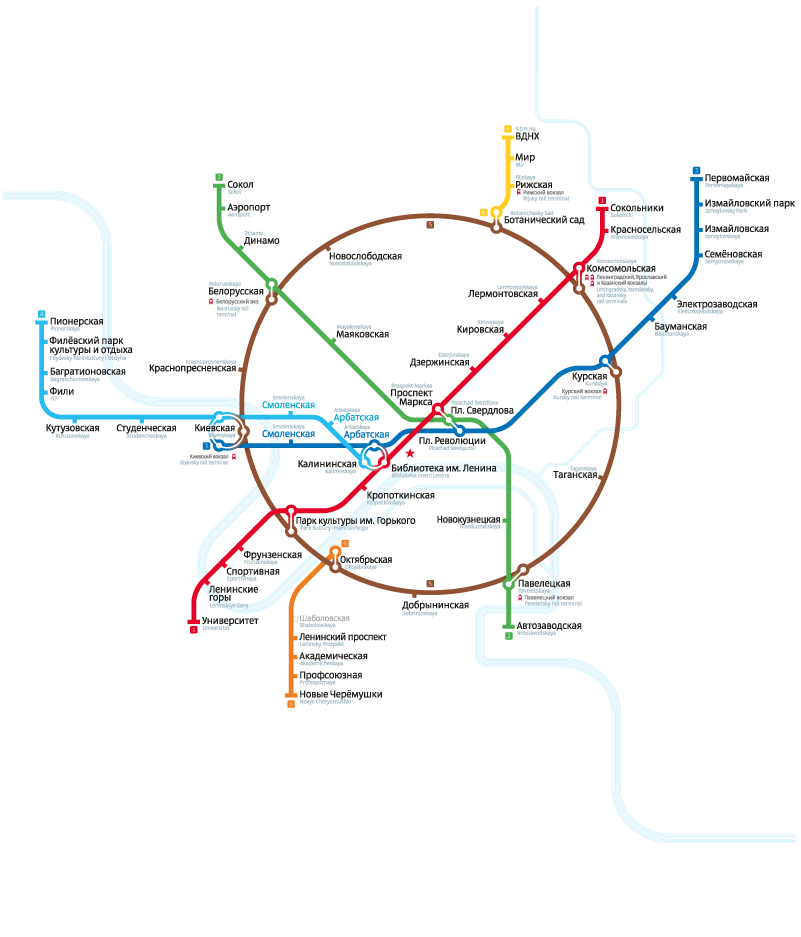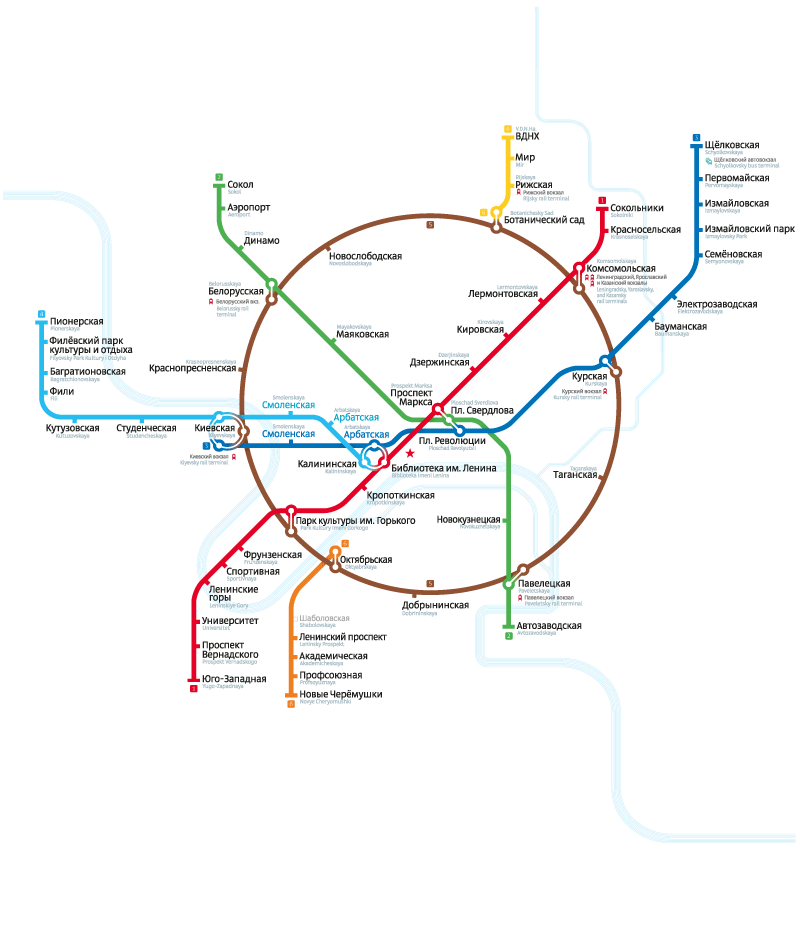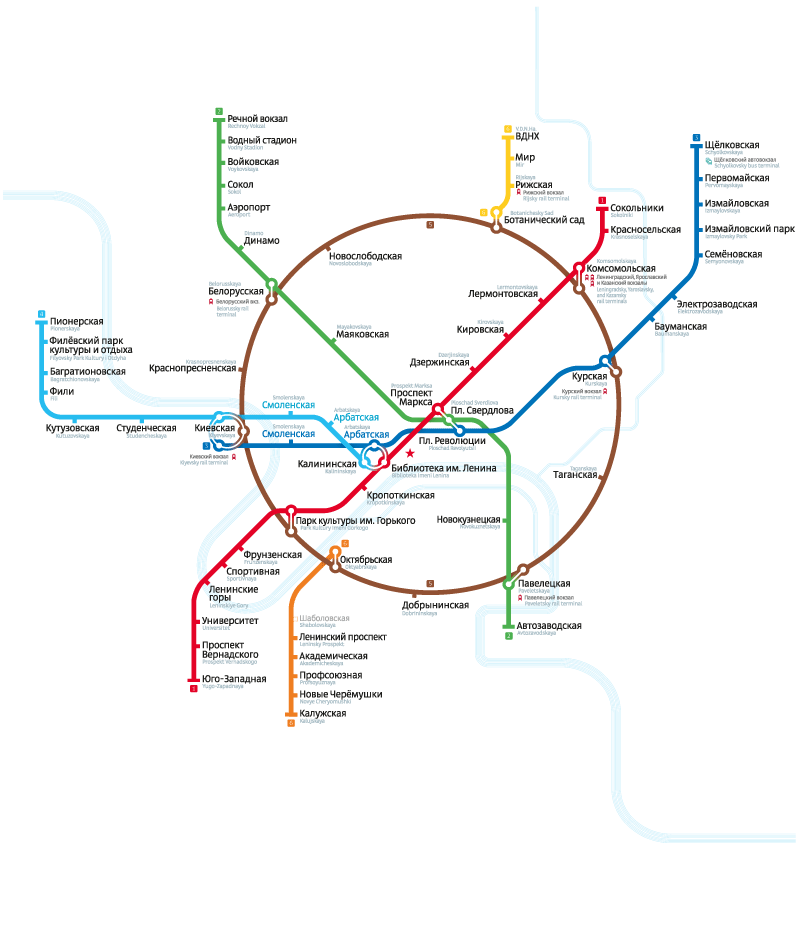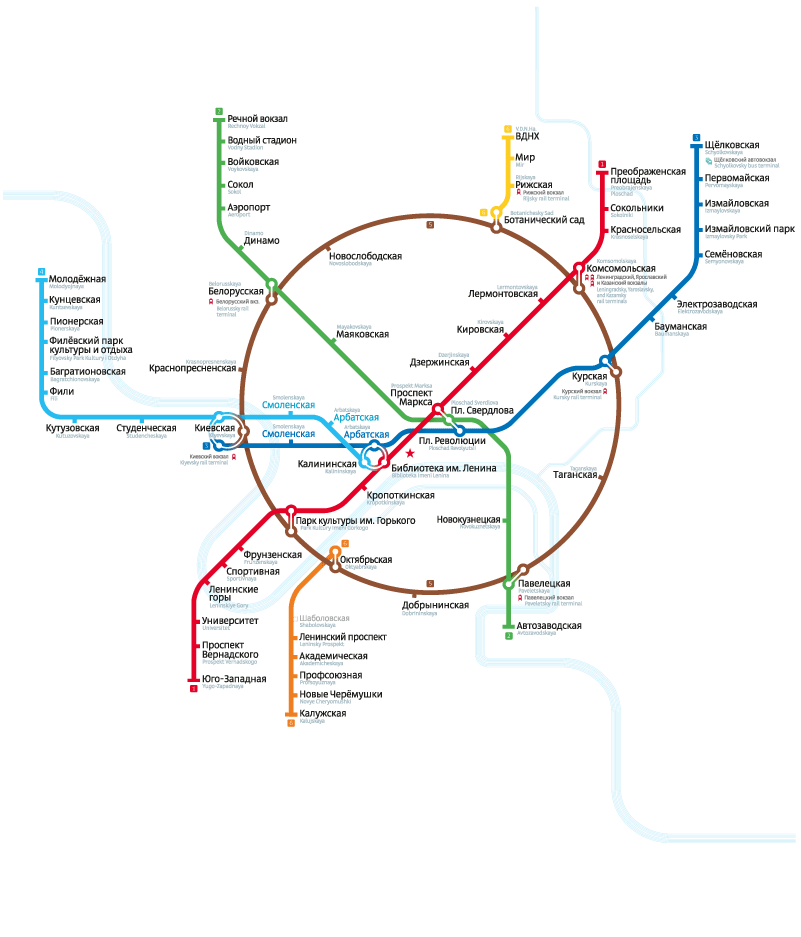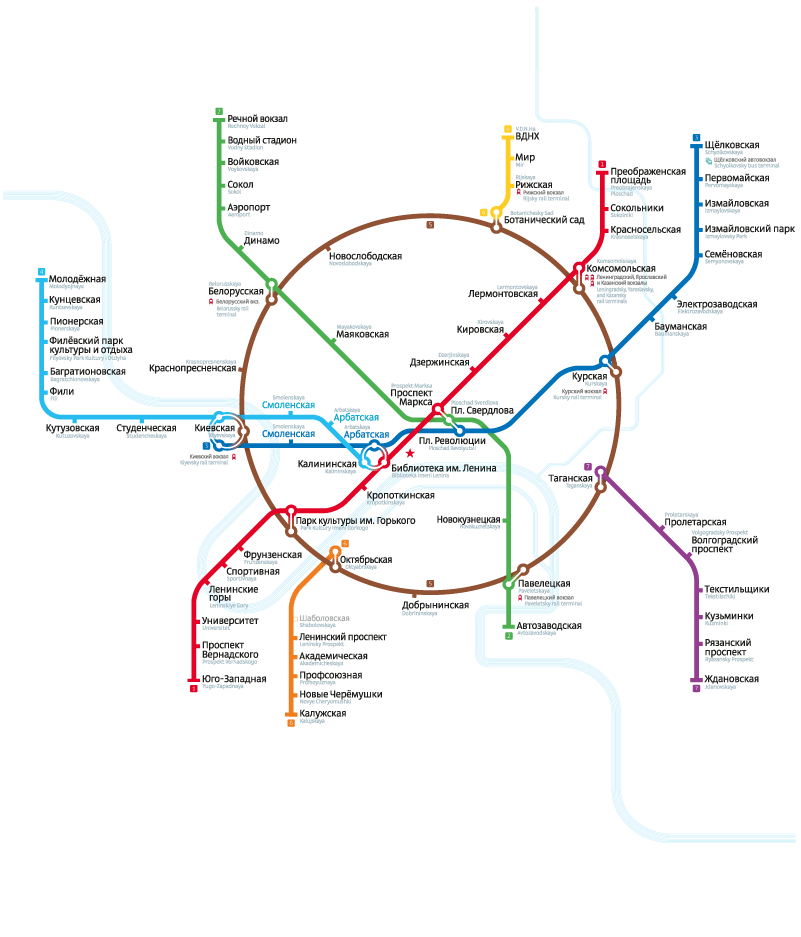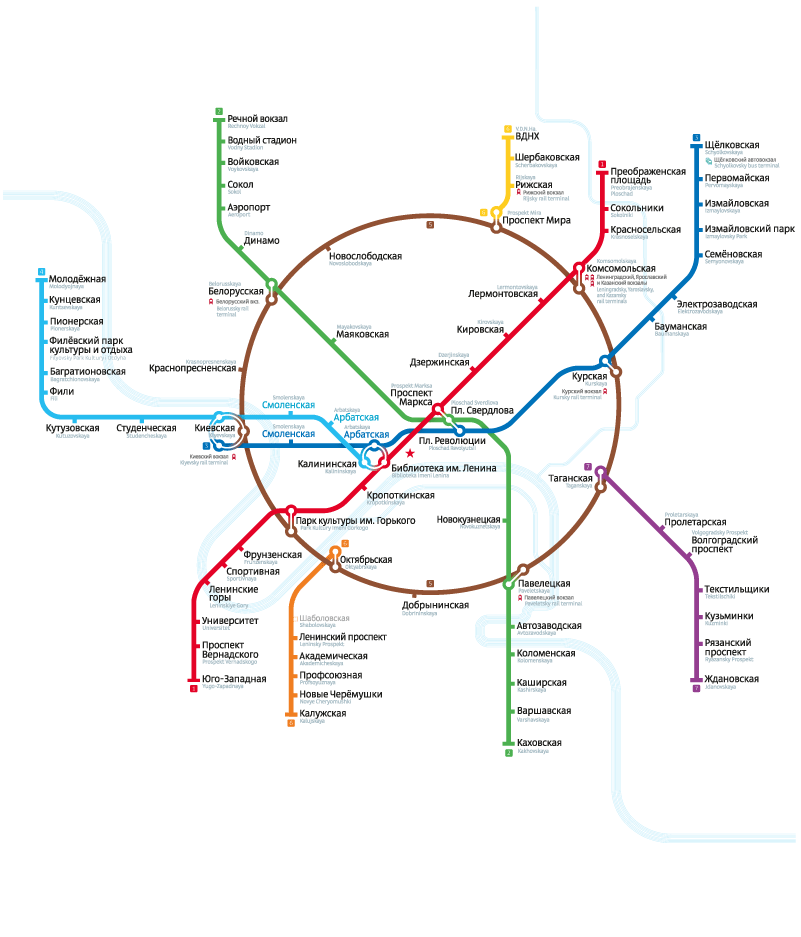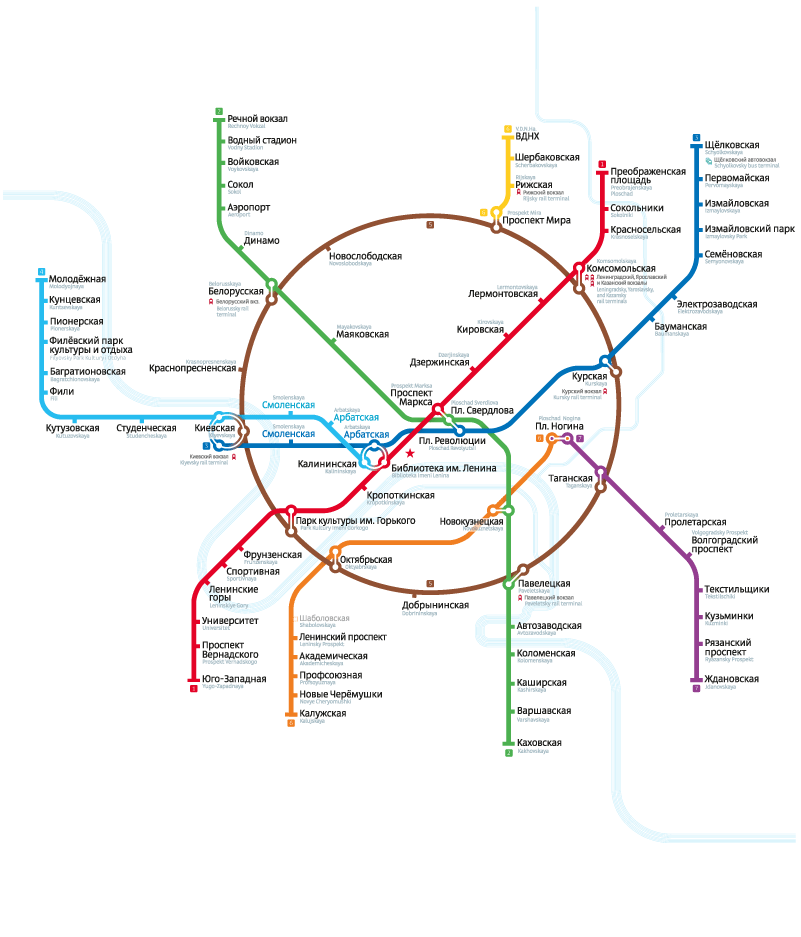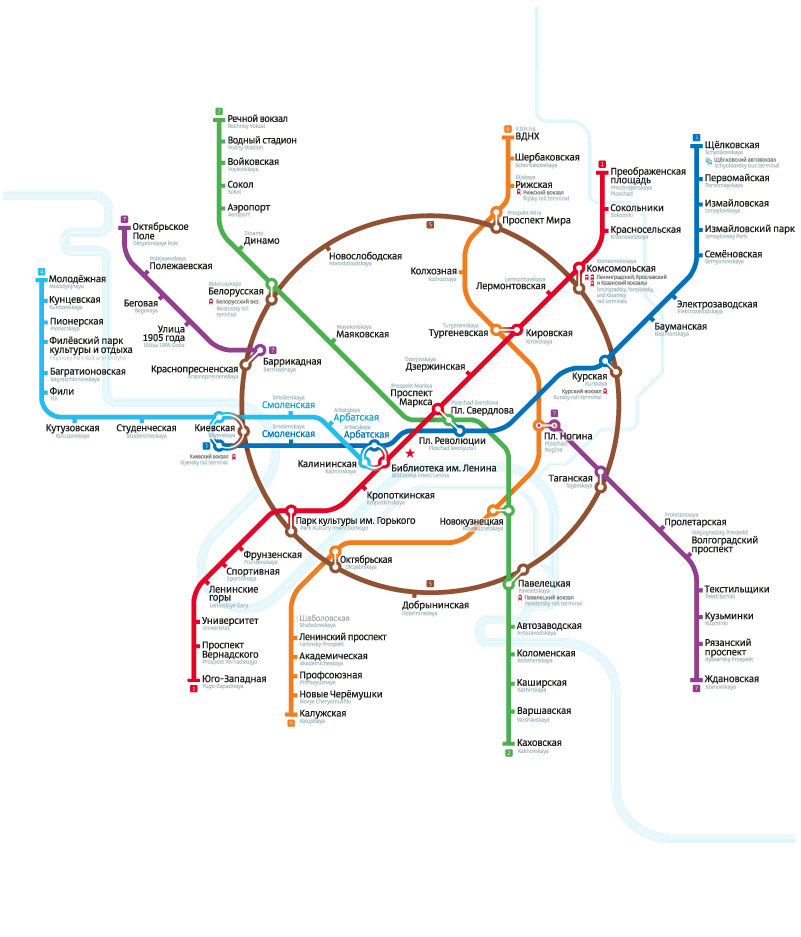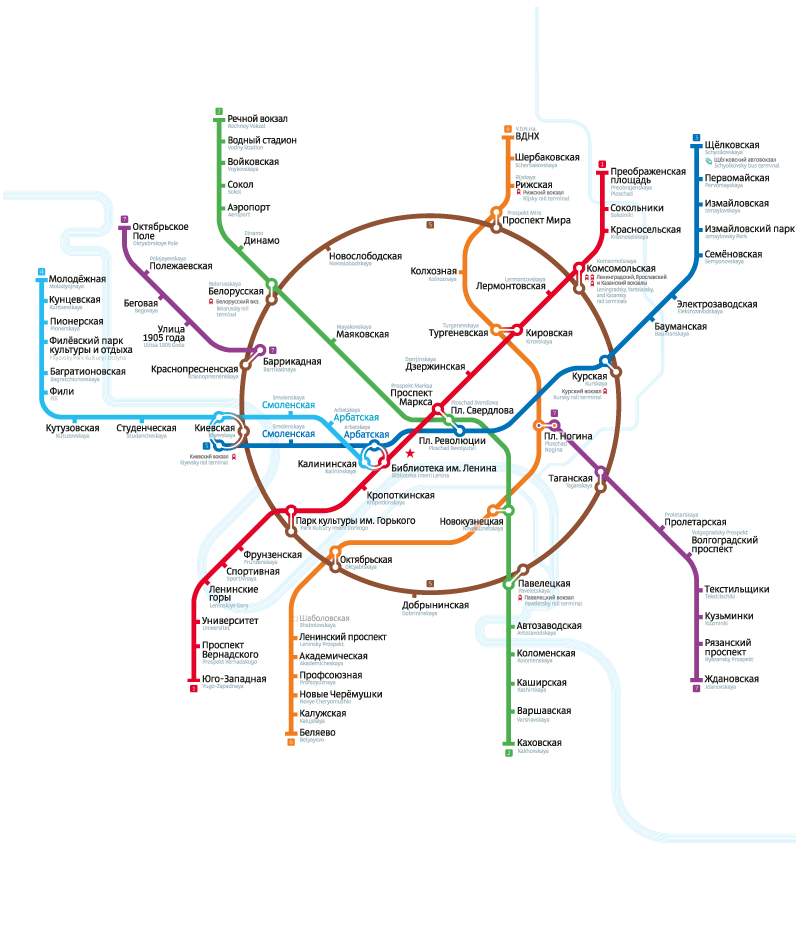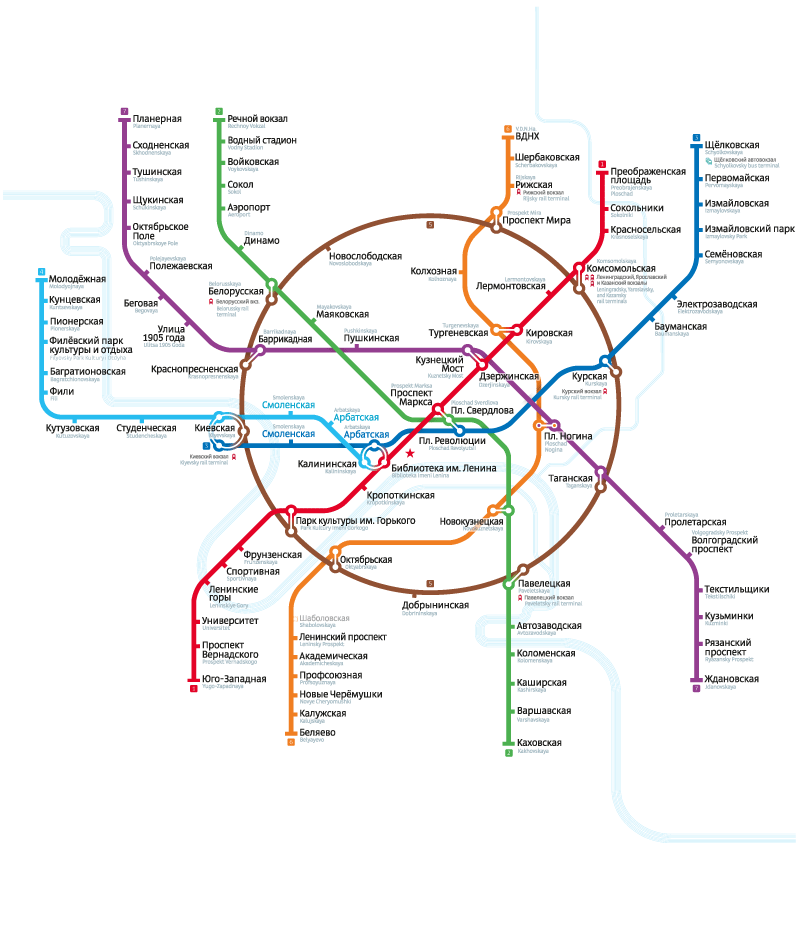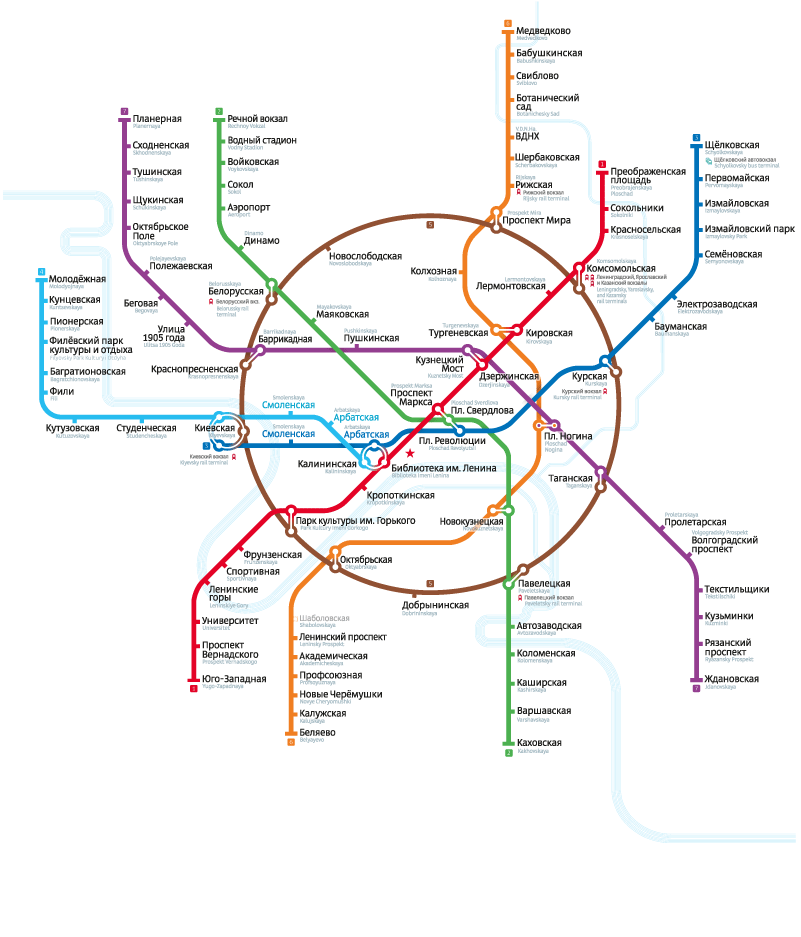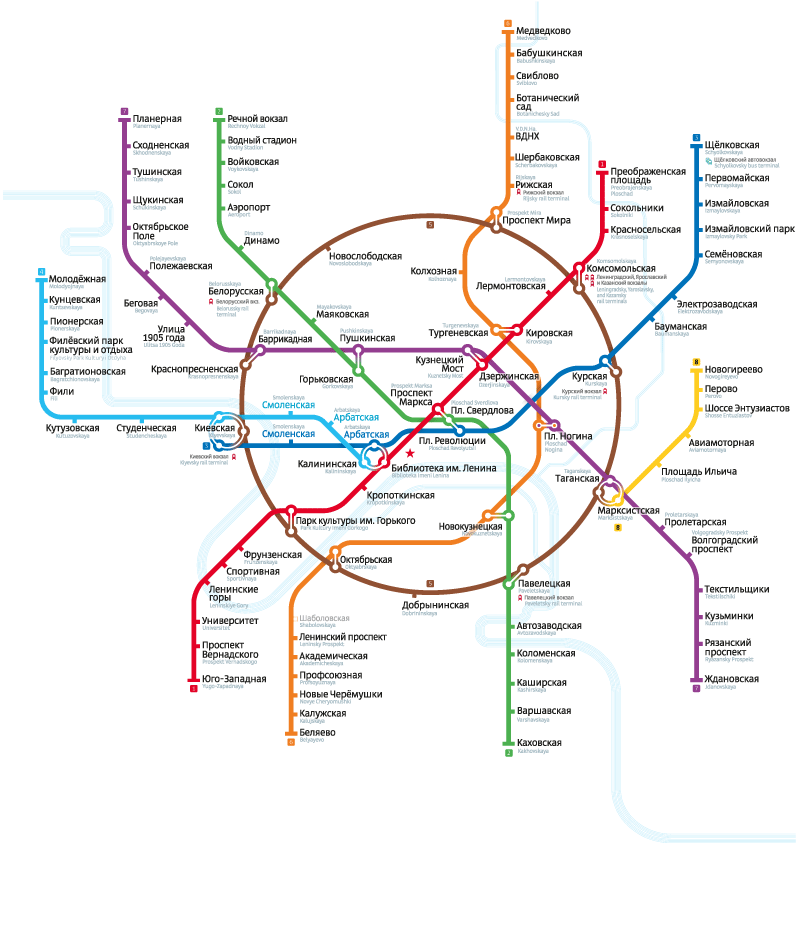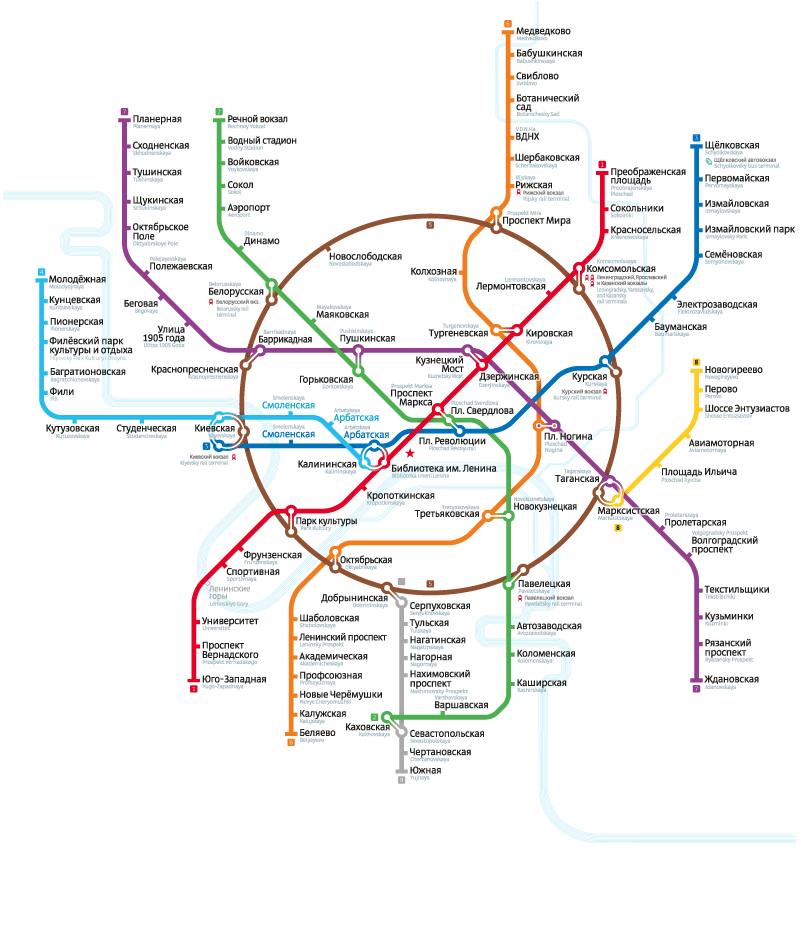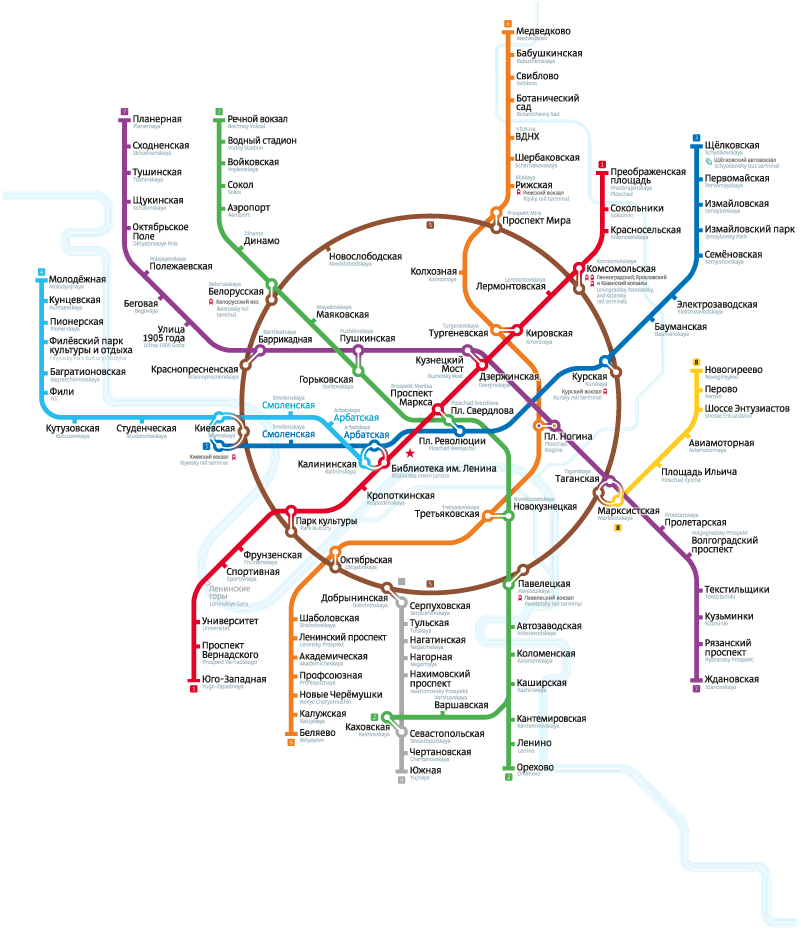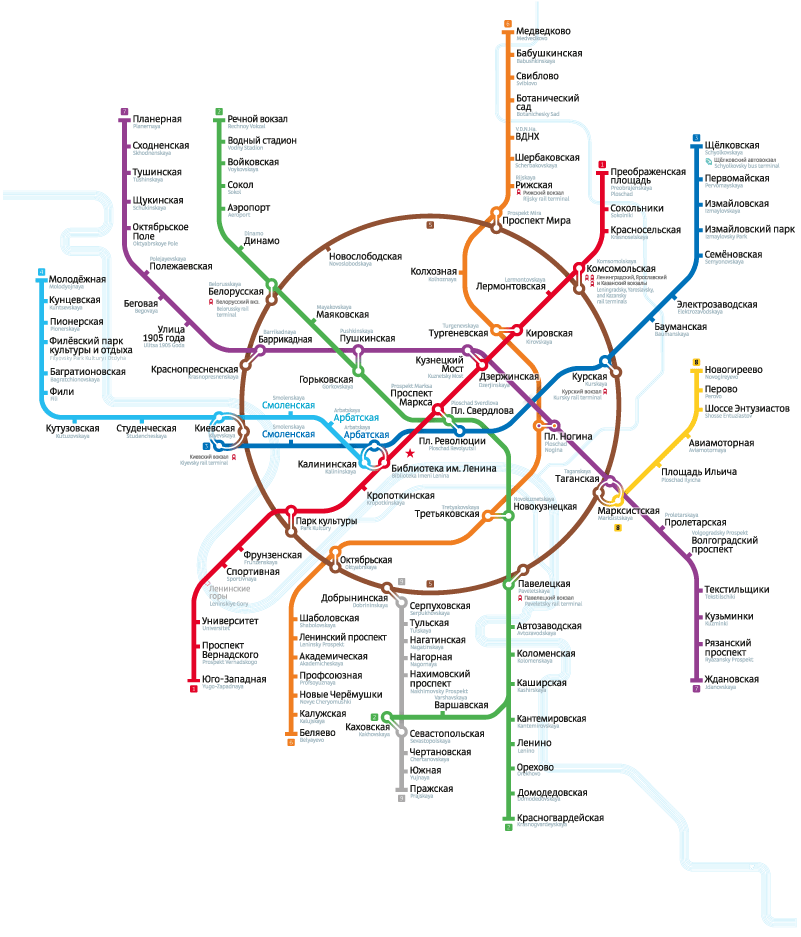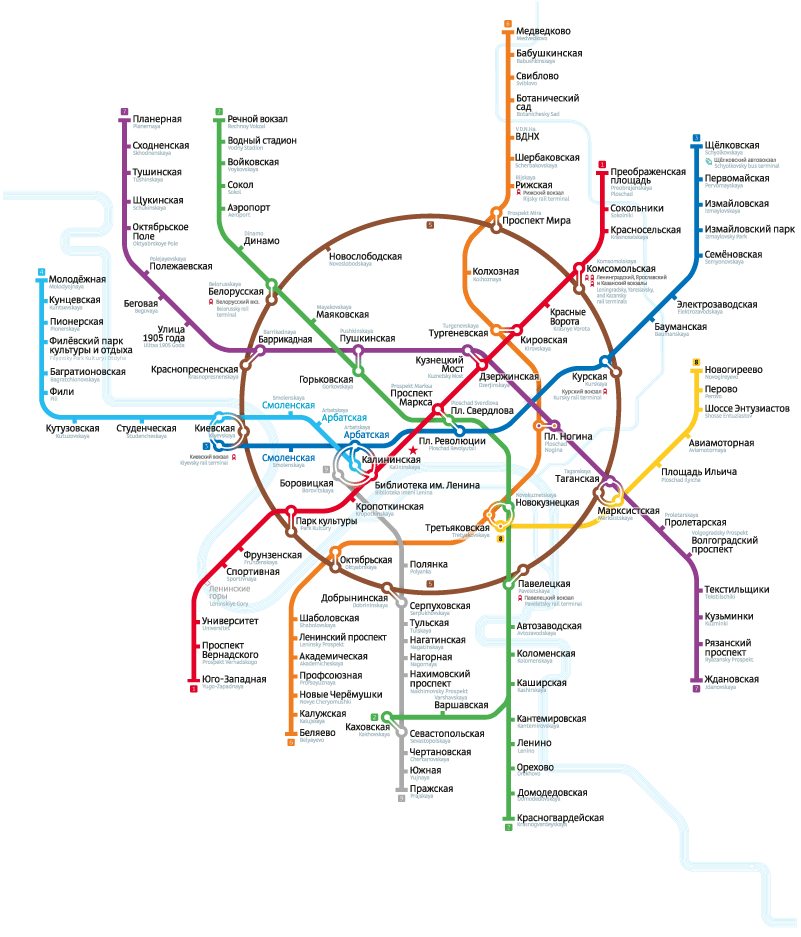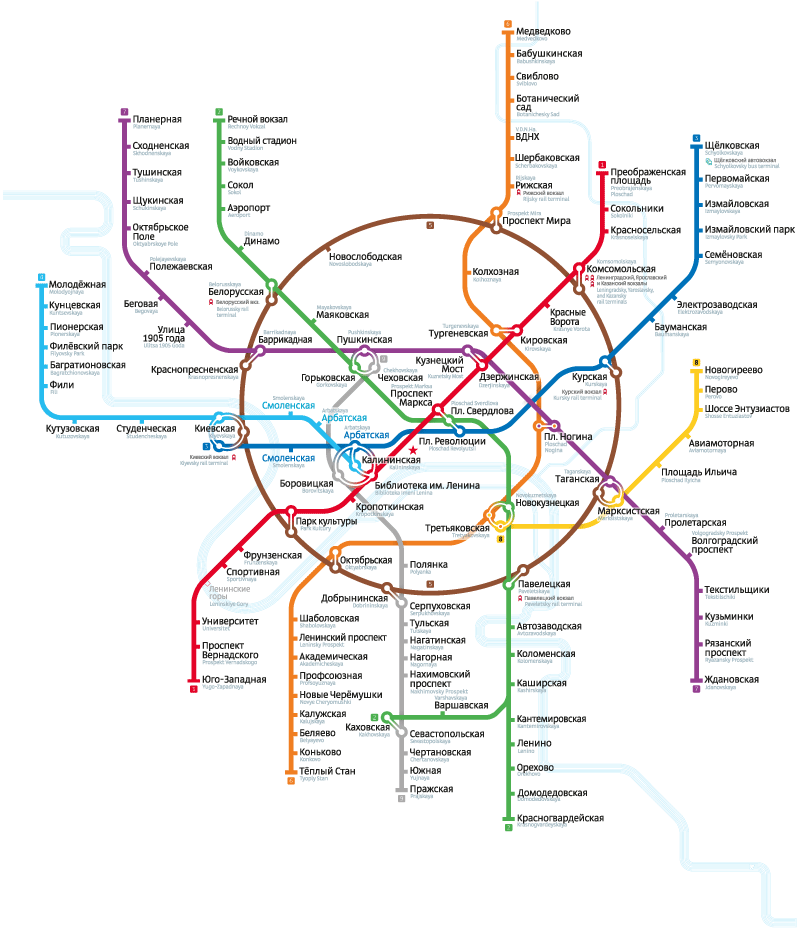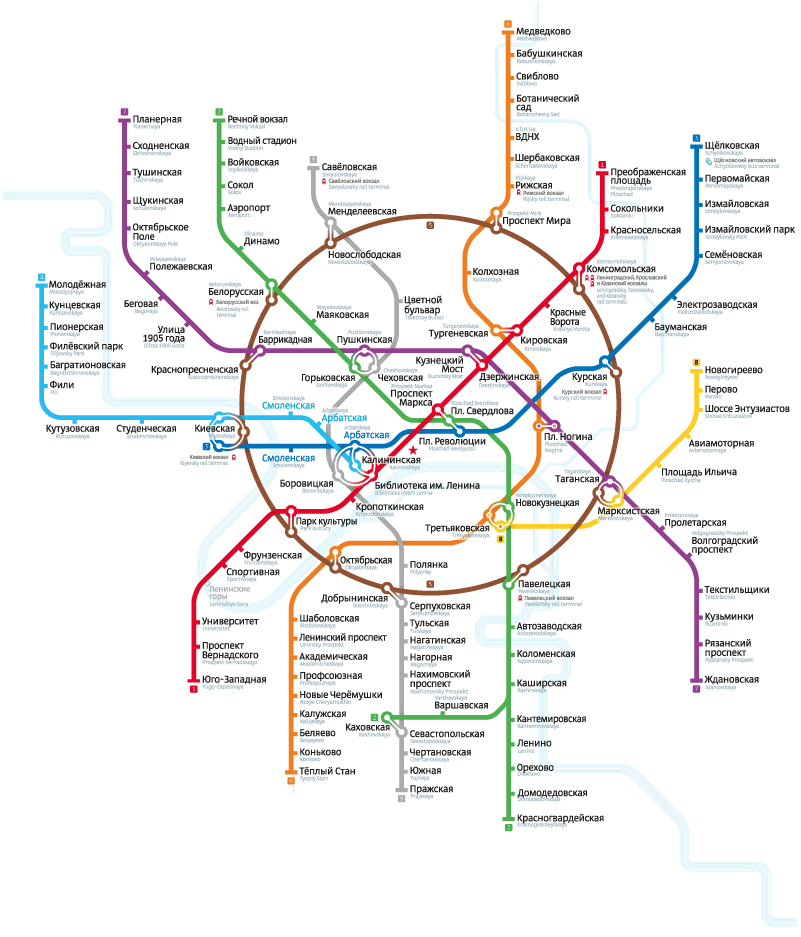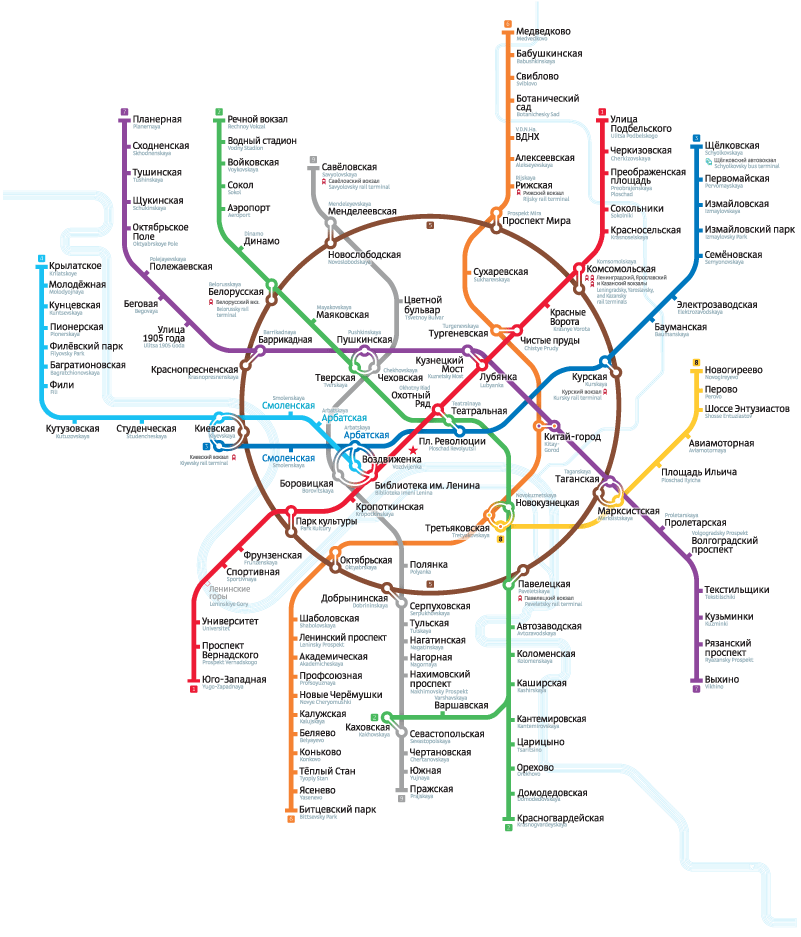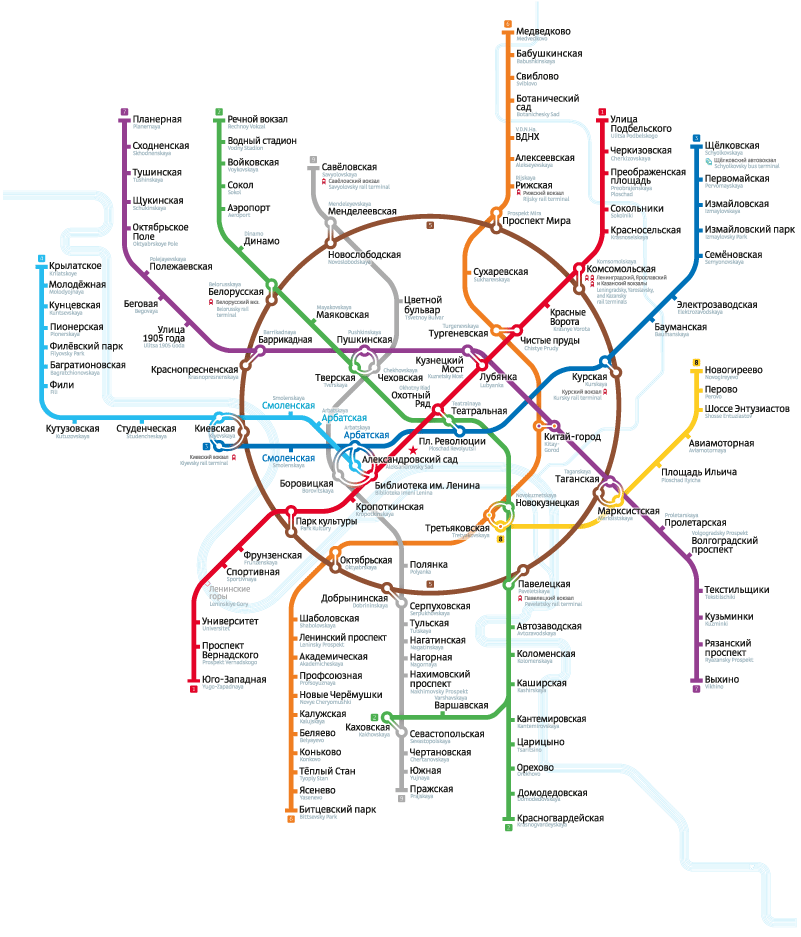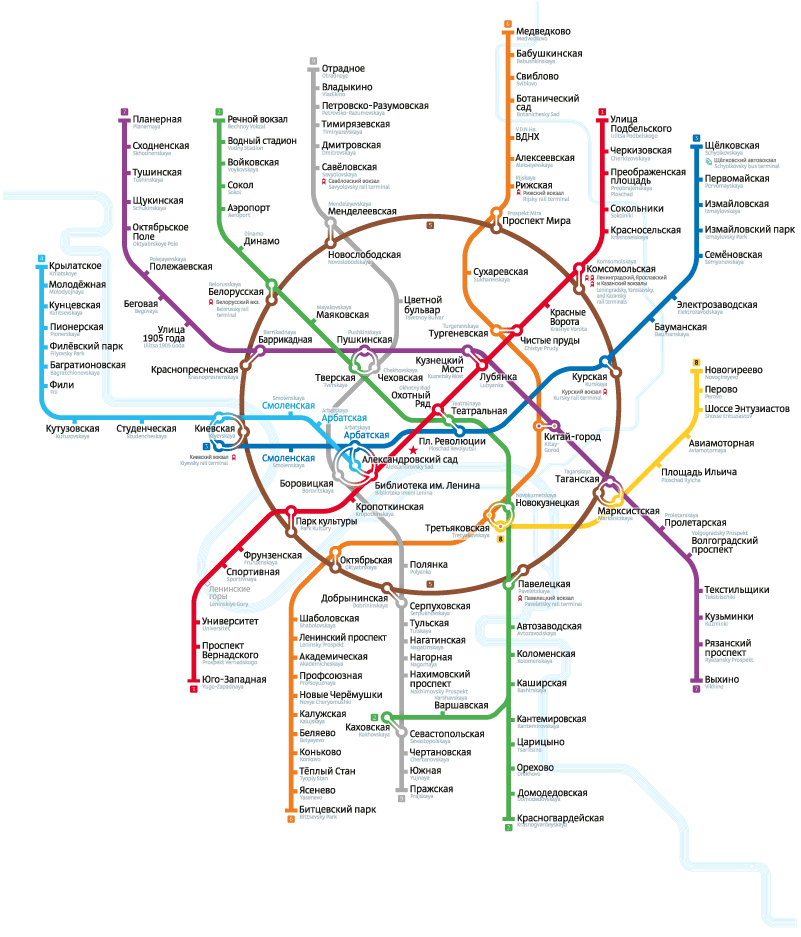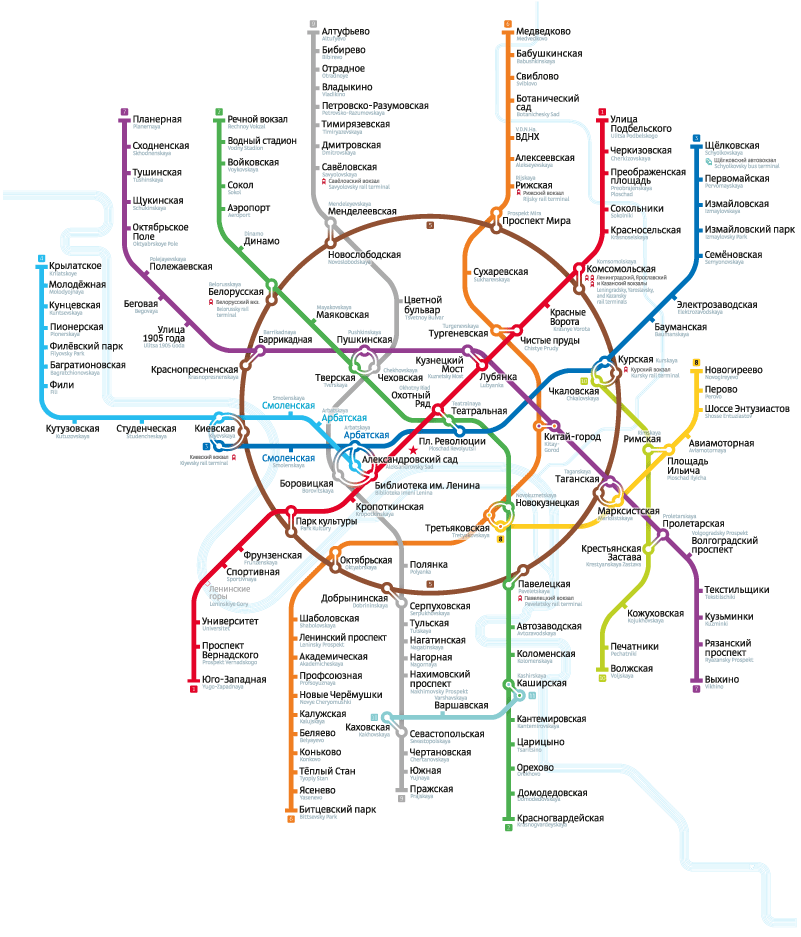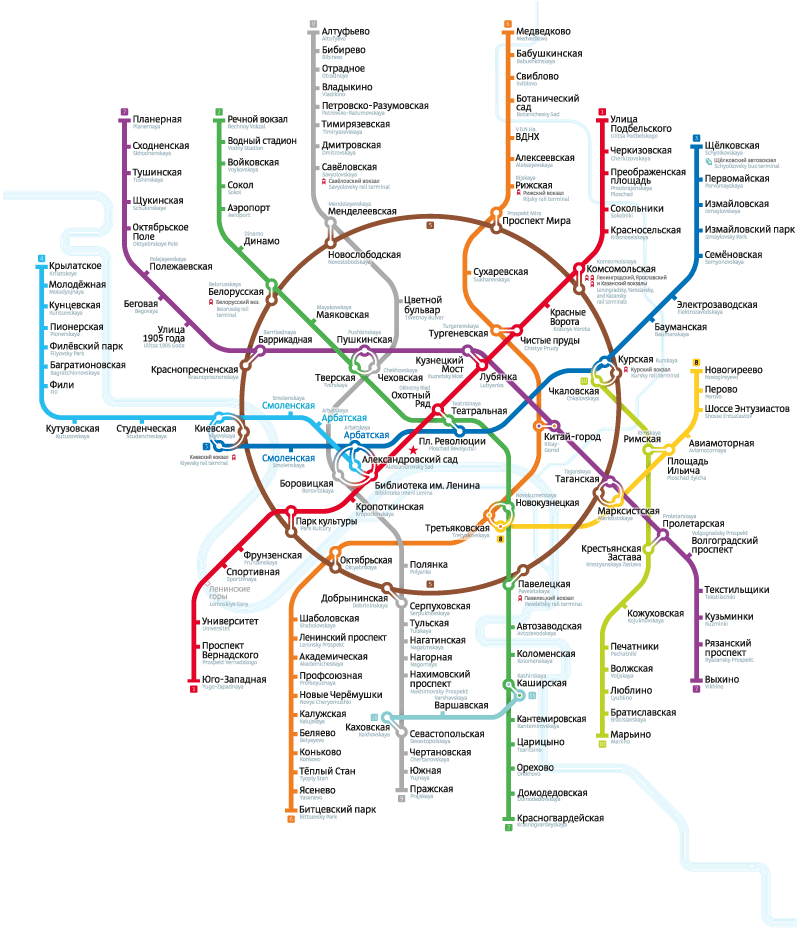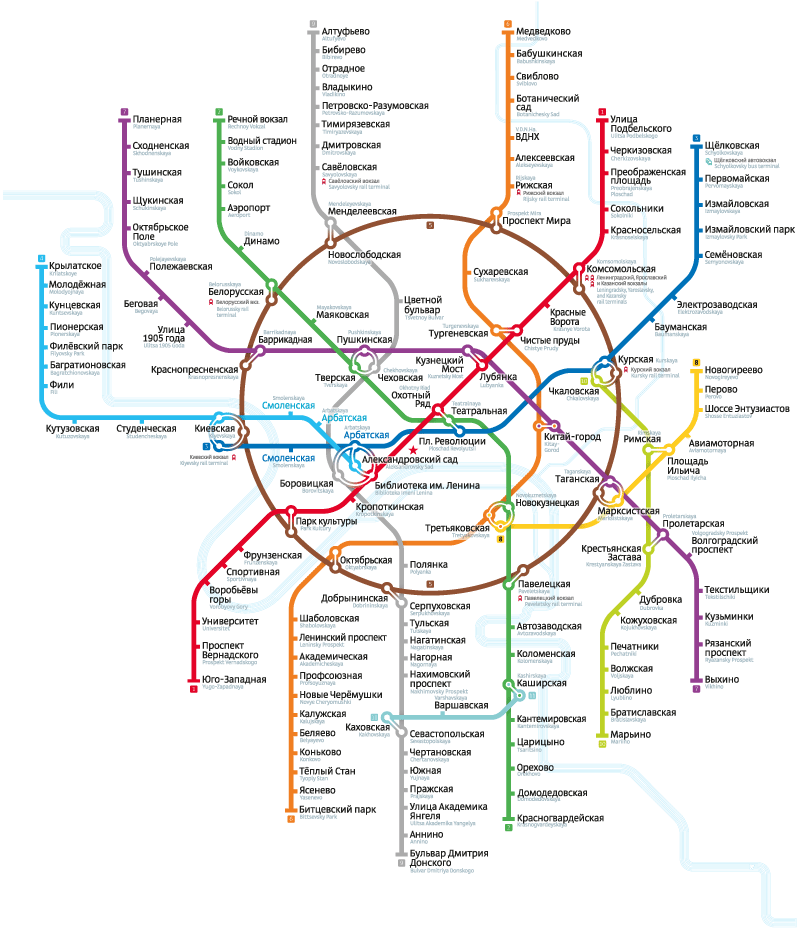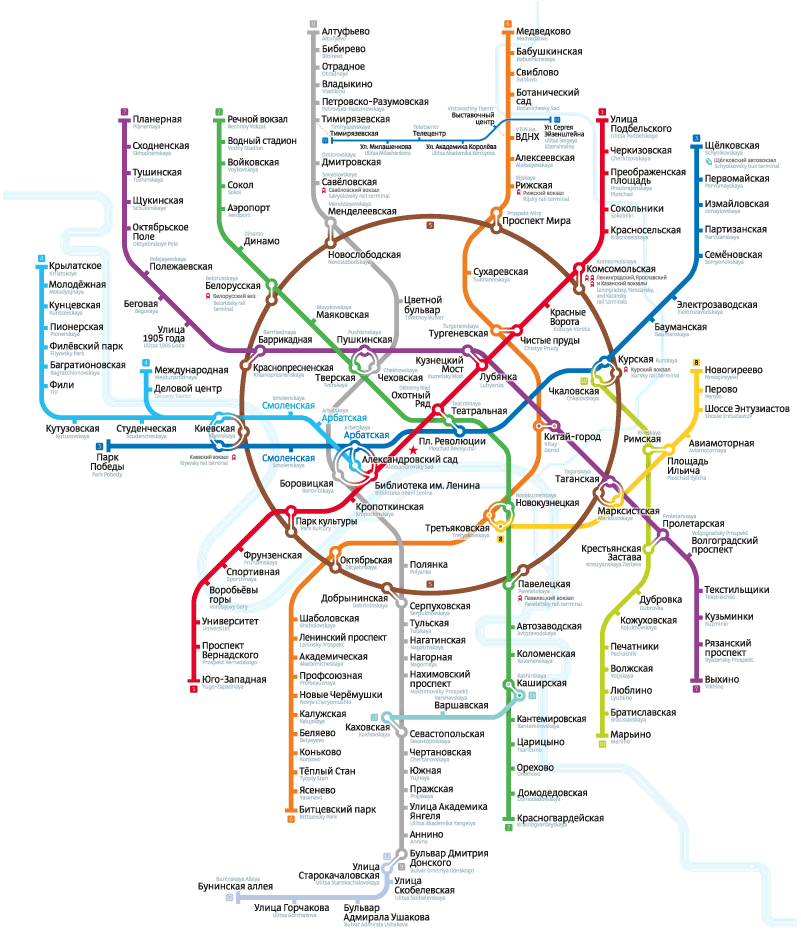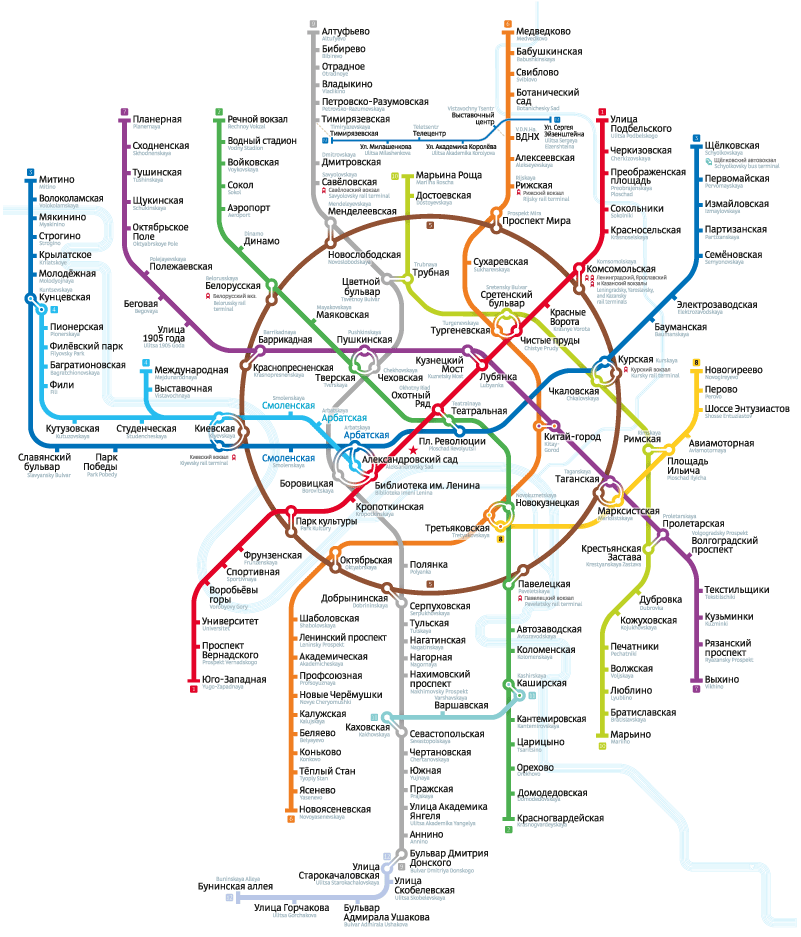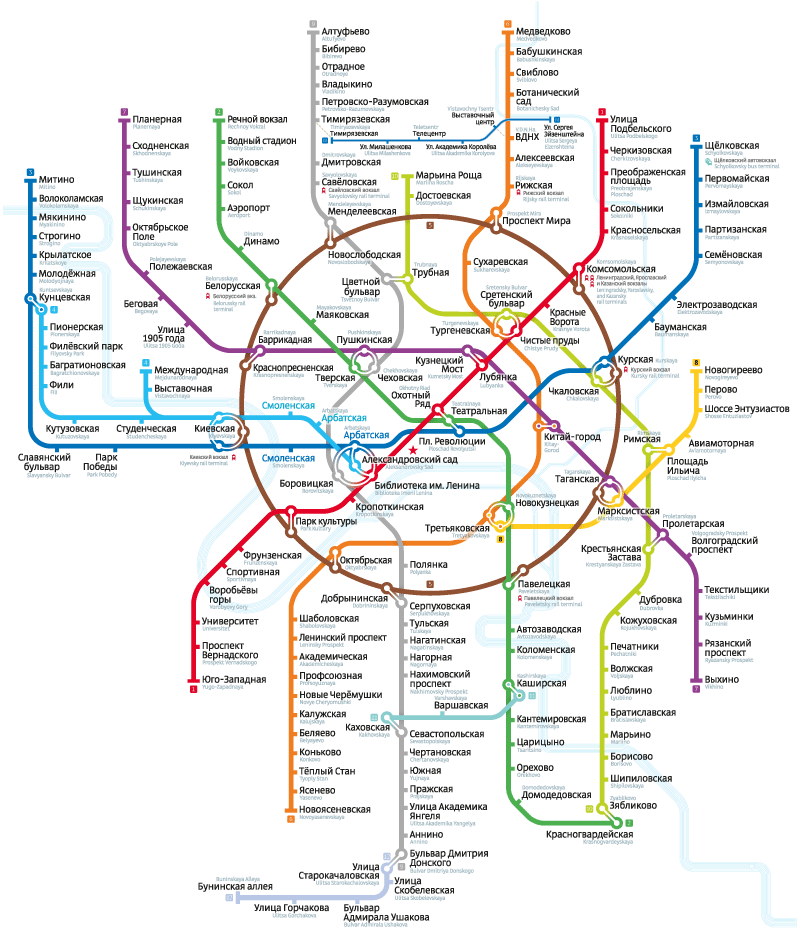|
Map 1.0
archived |
Map 2.0
archived |
|
Official maps: |
In metro cars
|
||||||
The making of the official Moscow Metro map
We have won an open competition for developing the new official Moscow Metro map. Meeting with people from the Moscow Department of Transportation to determine the project’s phase one size: maps for five types of metro cars, Moscow Metro rules, and a map version for Info-SOS emergency call kiosk.
First of all, we need to figure out the dimensions of the future metro car maps. Initiating Moscow metro car models research. Learning to tell the difference between the “numbered,” Rusich, Oka, Yauza, “point six,” and “hedgehog.” Measuring the walls. Trying various formats to determine the precise dimensions.
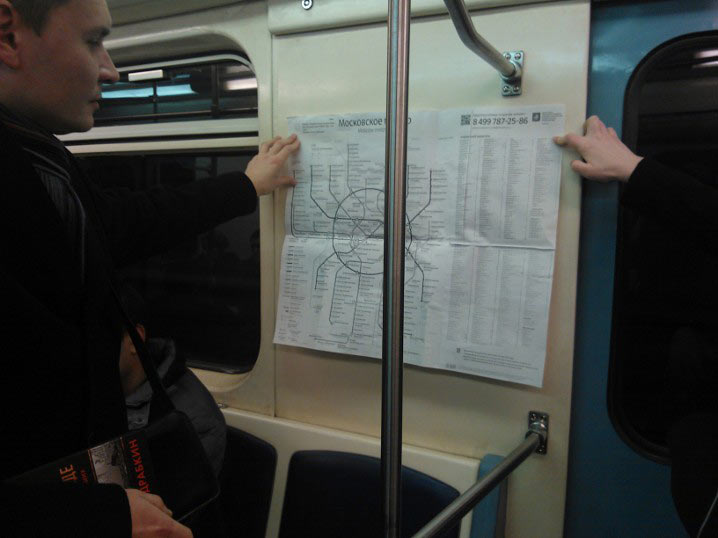
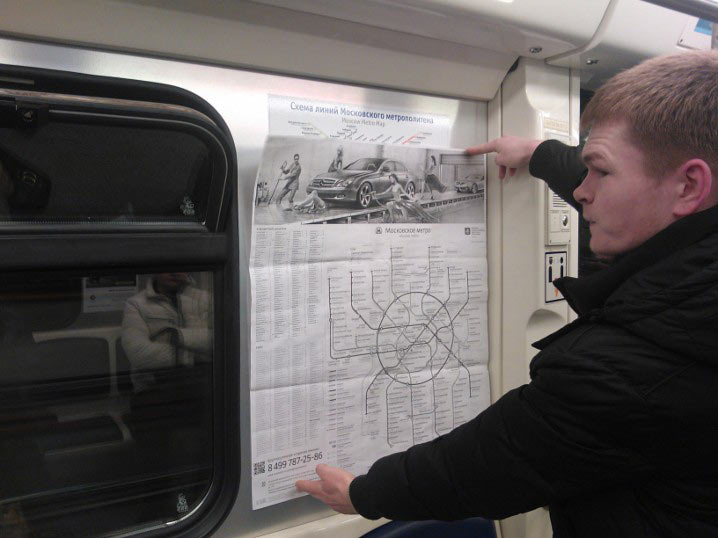
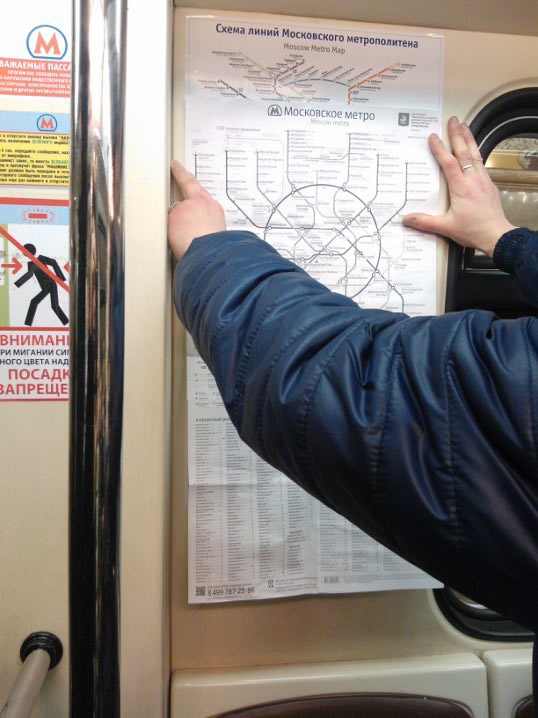
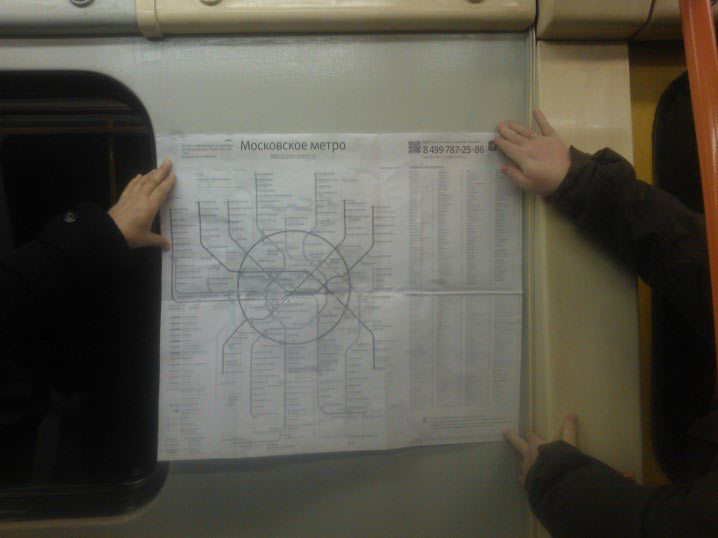
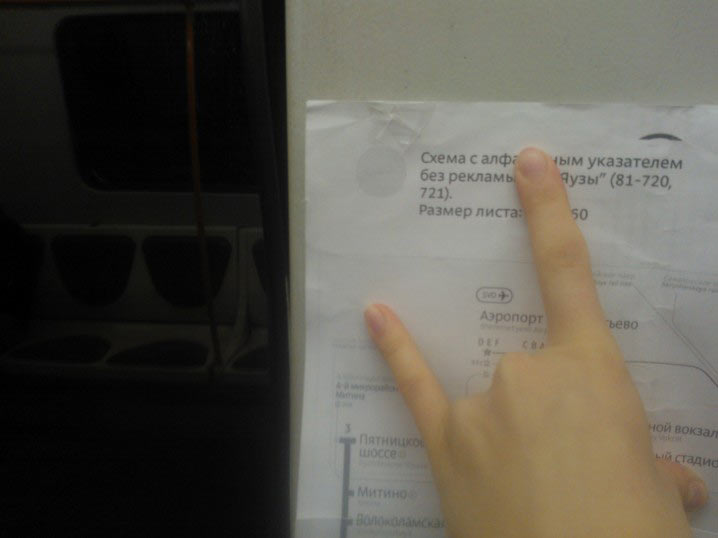
Moscow Metro rules
In most cases, the old map co-existed with the rules on the same sheet, with the latter set as a separate column. To accommodate the new index, we have to redo the rules layout and move them somewhere else.
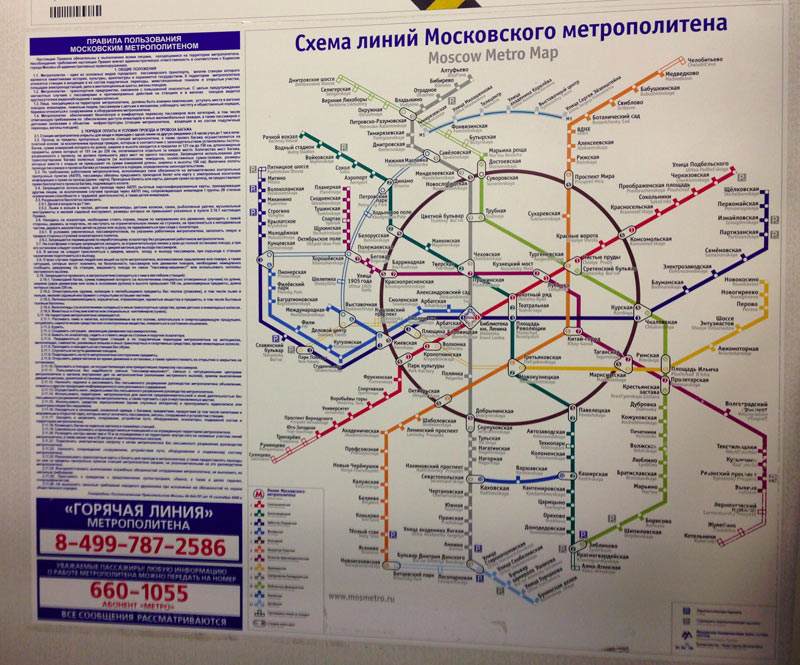
Almost all free space inside a metro car is contracted out for advertising, so finding a new location for the rules is a challenge. Receiving ad placement plans for different metro cars, trying to guess the module dimensions, printing on an office printer and going out for field-testing.
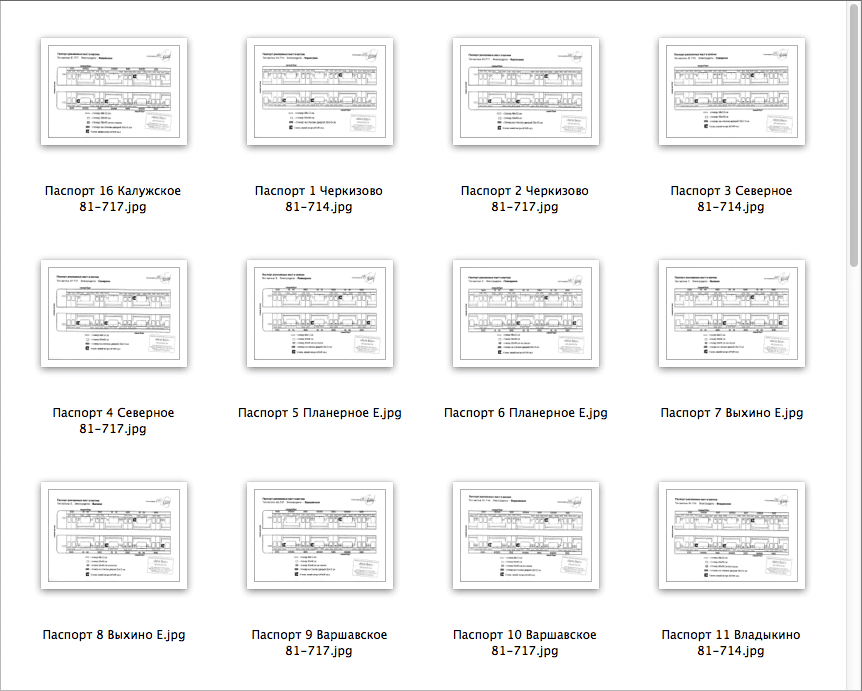
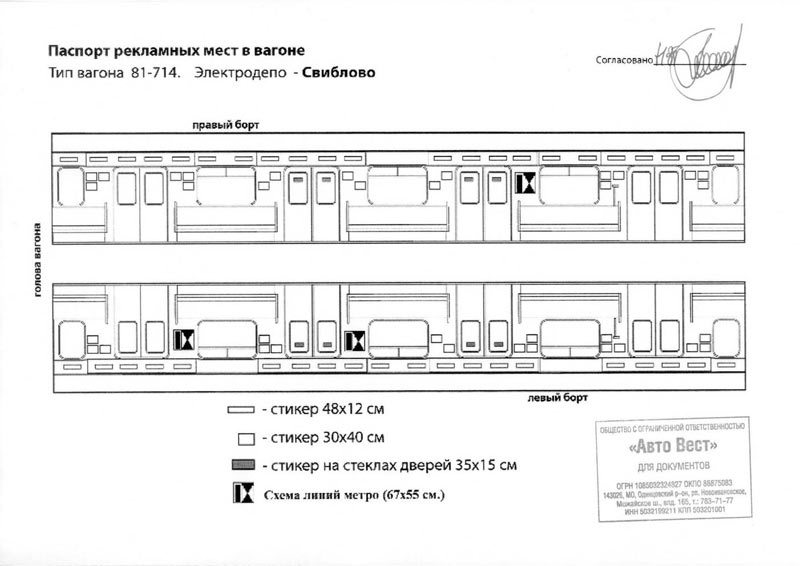
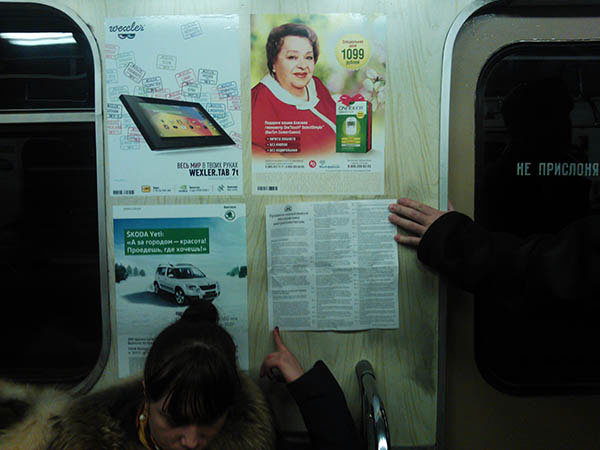
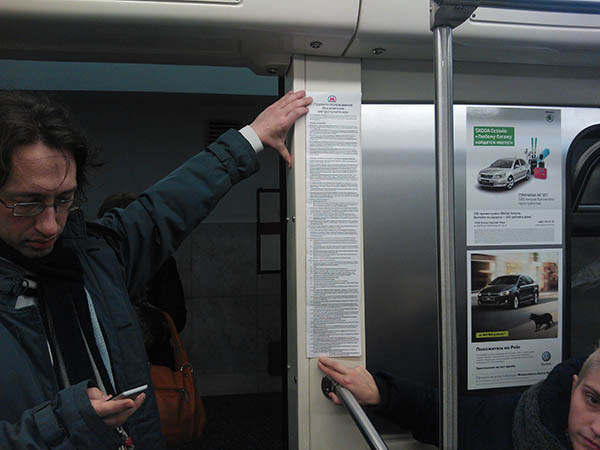
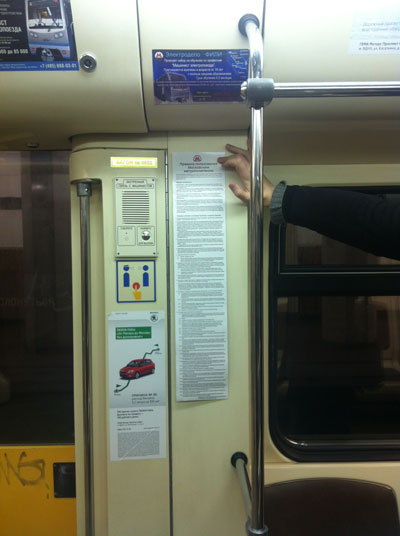
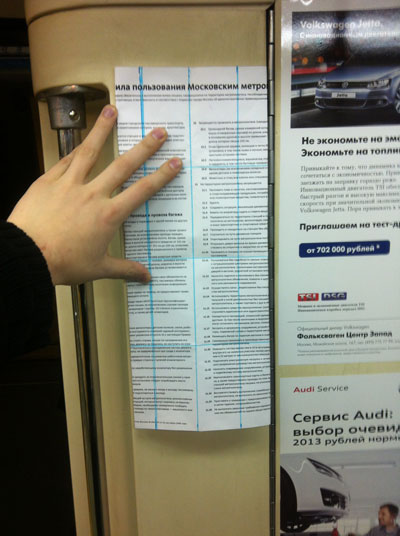
Selecting potential locations and calculating the exact dimensions. Making our choice of three formats. Sending it to the Moscow Department of Transportation to use in a competition among vendors to print the map. Moving on to typesetting.
The rules layout needs to be redone to be used separately from the map, thus freeing up the valuable space.
Before:
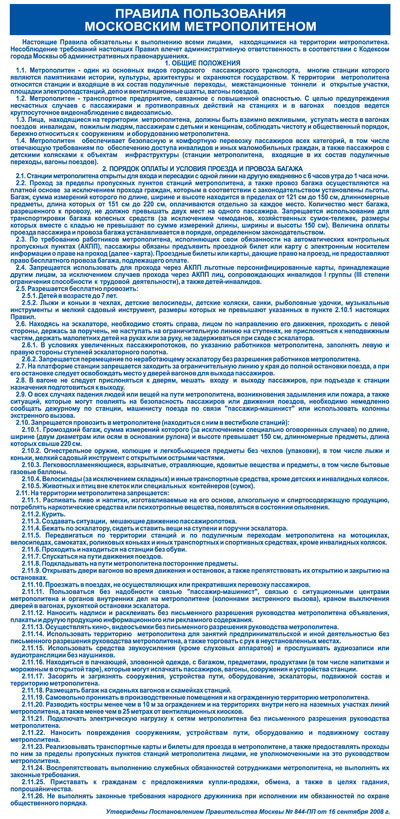
Game rules: no text change, no order change, no numbering change. But it is allowed to employ good typesetting to bring attention to important things.
After:
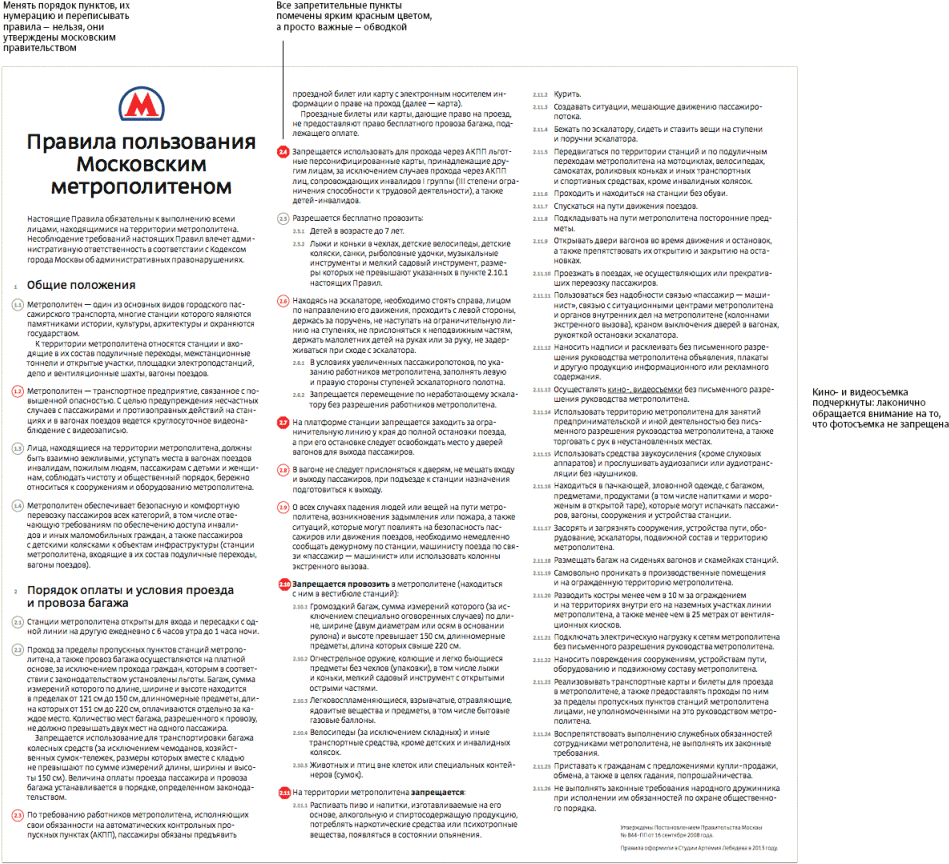
Typesetting three different formats for the rules in different metro car models (one square and two tall ones)
Noticing an easy to overlook curiosity in the rules: taking video is prohibited, while taking photos is not. Intending to make pictograms at first, but realizing that their number is overwhelming. Using an underlining to stress the key-words instead.
Emergency call kiosks
There are also Info-SOS emergency call kiosks, those blue-red posts on platforms. The Info-SOS structure, top to bottom: icons, logo, the map is placed right over the speaker, for which a group of holes is punched down South around the gray line (resulting in a weird circle), below sits a camera and mic, instructions in Russian on how to seek help, and push buttons.
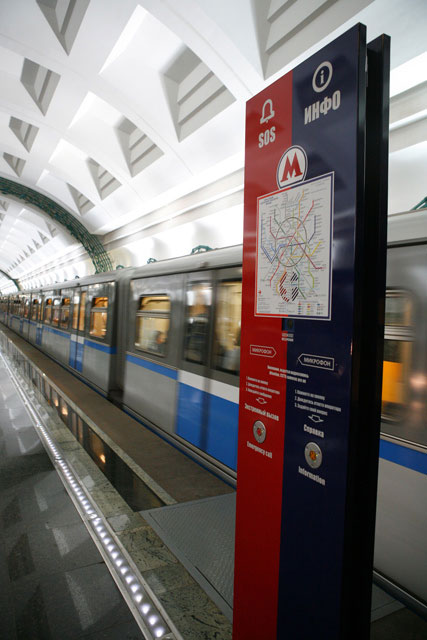
We are not crazy about placing the map over the speaker, but really want to find a reasonable solution.
Each format calls for another submersion down the subway for a try out.
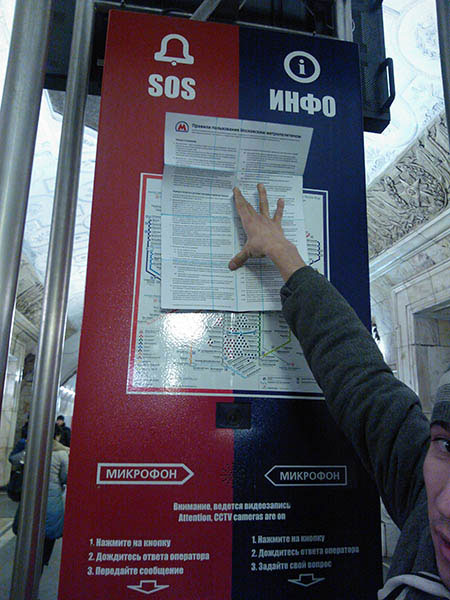
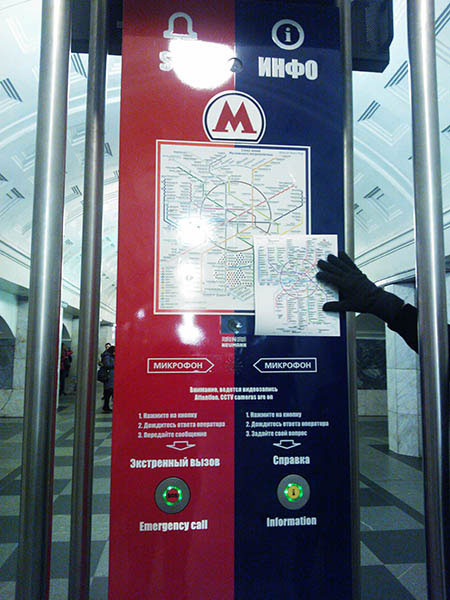
At some point going down the metro proves inefficient so the need for a working model becomes apparent. Lyosha Sharshakov takes a ladder, tape, ruler, utility knife, and paper and builds a life-size Info-SOS model on a wall at the studio.
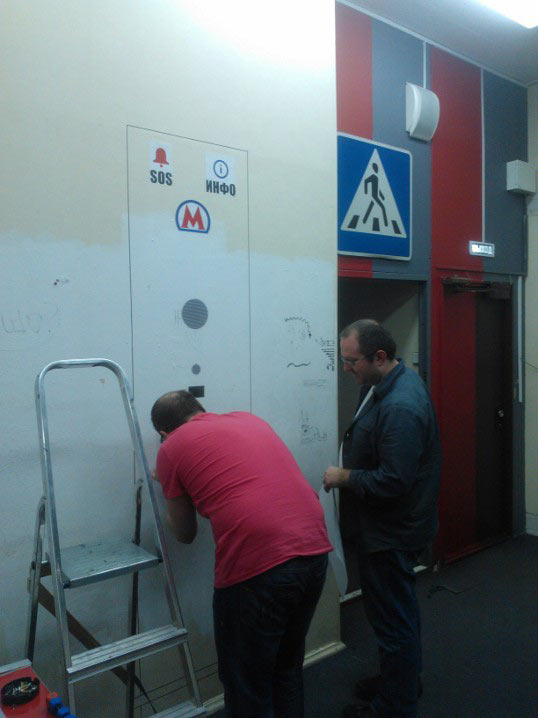
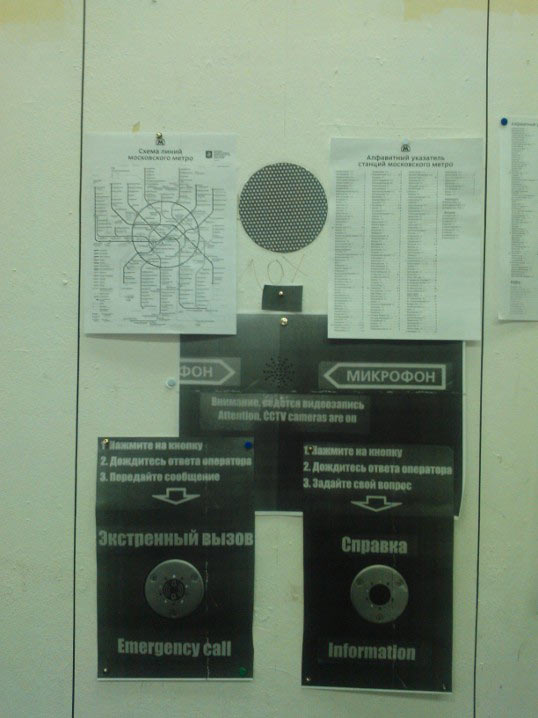
Now we cruise between the printer and the wall-mounted model.
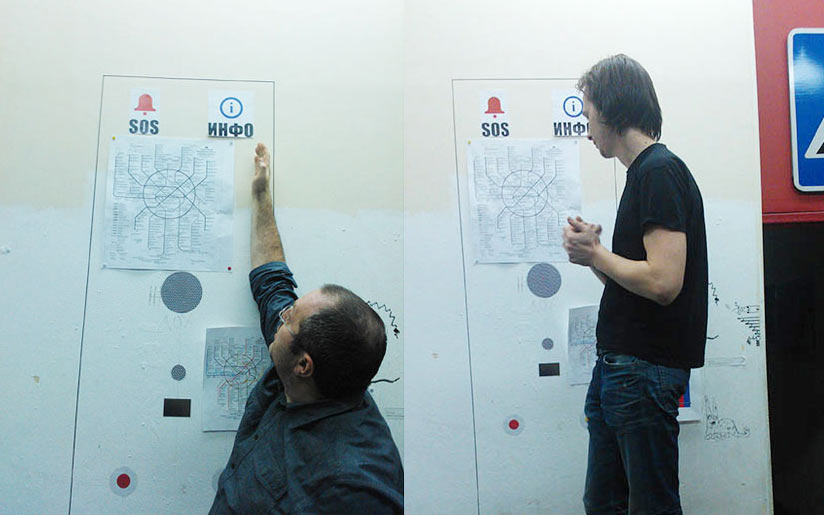
Pictured: two options of placing the map—up high, under the pictograms, and low, under the speaker and to the right from the mic. The second option uses a smaller map, but it’s closer to your eye-level.
We’re just about to agree to place a bigger map up high, when Tema shows up calling it BS and saying we need to place the map low for the sake of shorter people’s convenience. Yes, it’s smaller, but closer, which spares the passengers some scrutiny. It will work just fine for regular passengers. And skyscrapper-people are not so numerous, plus they’ll be inconvenienced anyway when bending down to talk to an operator, so it won’t make much difference for them.
Building the map and index to be placed at a level of reasonable legibility while avoiding punching any holes. The index turns out large and highly legible.
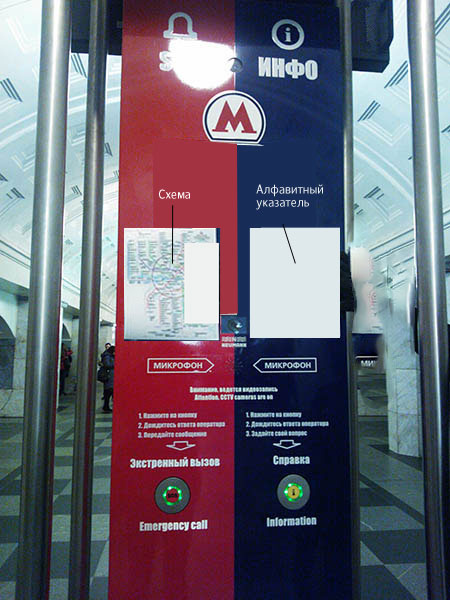
To ask a question to an operator you have to get pretty close to the kiosk, so everything on the map is perfectly readable. By the way, there’s no reason not to place another map at the other side of the kiosk.
Metro car map: typesetting
Finalizing the map and in a parallel process finishing its layouts for different formats. Typesetting five formats for different metro car models (one format comes in two versions: with an advertising block or index) plus an additional format for Info-SOS.
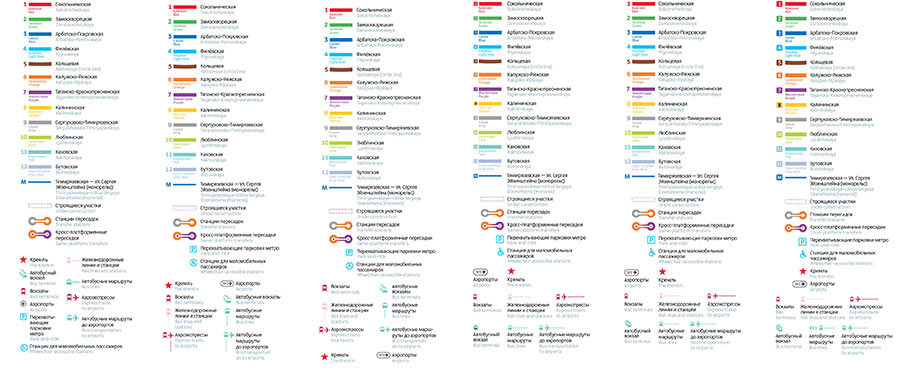
Typesetting footers for different formats.
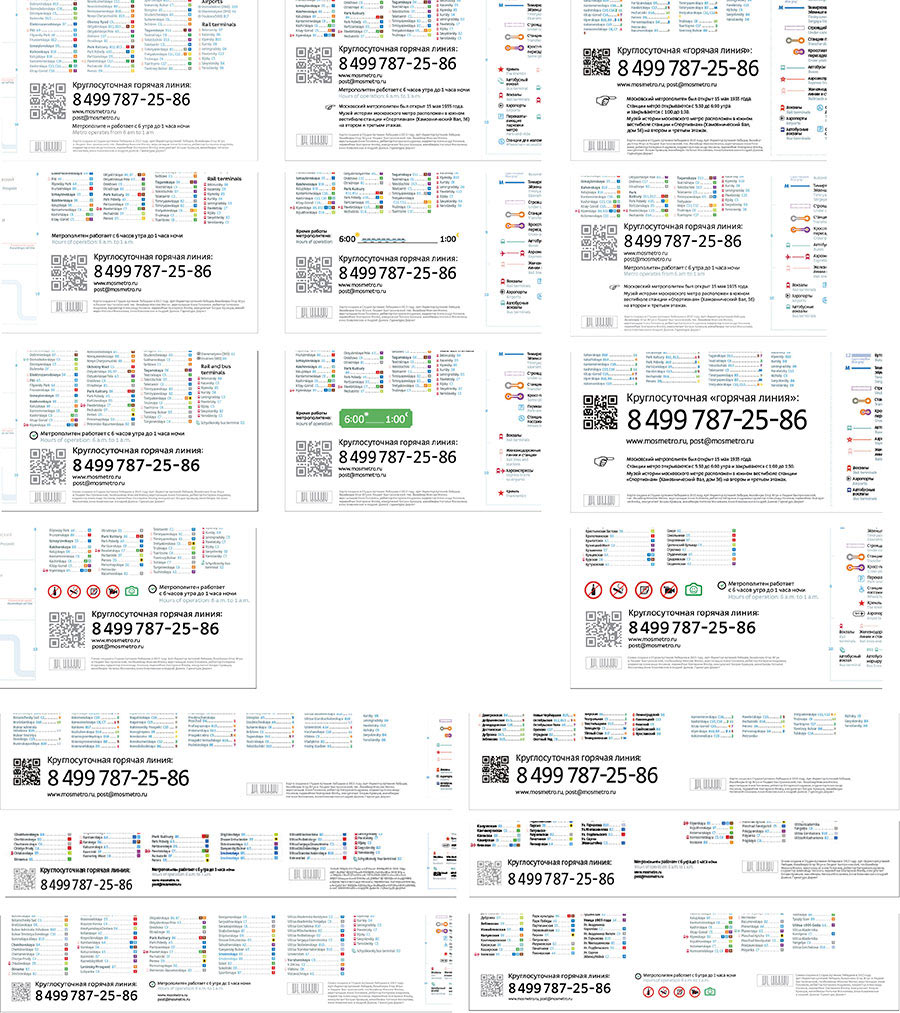
Preparing two formats for Info-SOS, one for each side of the panel. These are the only two map versions without the English “subs.” Removing the Index in English, removing English from the map itself, and resetting the legend.
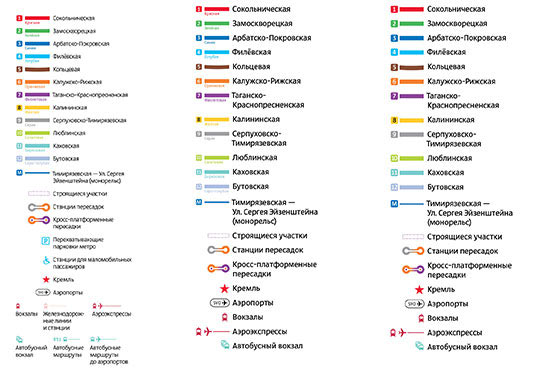
Dividing the map for emergency call kiosks in two, so it can be placed on either side of the mic. Searching for a way to size the map up.
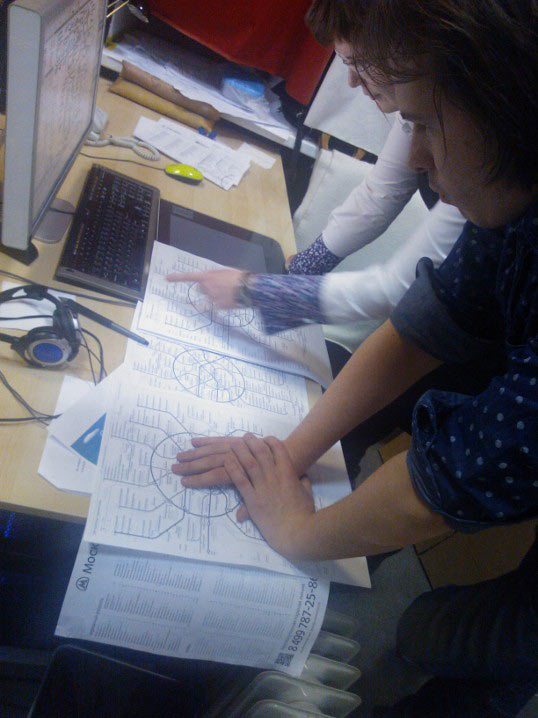
During the whole typesetting process, corrections from editors, translator, Ludwig’s blog readers (as the project’s designer, Bistronovsky made a series of posts on the map making process), and other volunteers are making their way into the map.
The version with an ad block alternating with the index has a committed module width, which effects them both. Plus it must sit 10 cm (3,9″) from the bottom edge to avoid being blocked by the head of a passenger sitting under the map. Deciding to fill in the ad module with the index, so it’s not blank in-between campaigns.
Typesetting. The largest version comes at 67×57 cm (26,4″ x 22,4″), he narrow one is 36×74 cm (14″ x 29″). Two smallest ones go to Info-SOS.
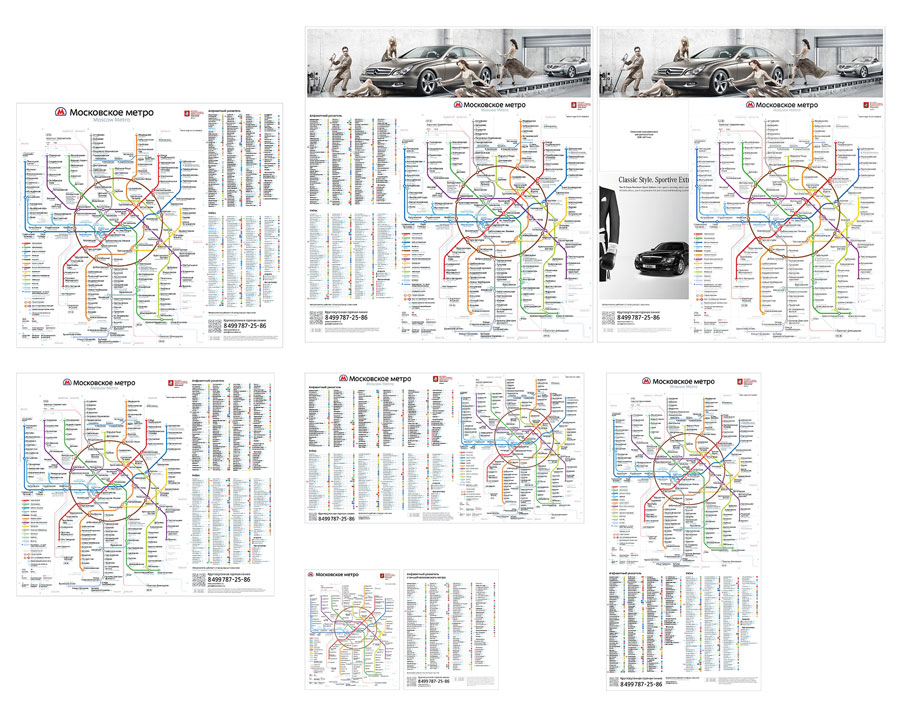
A placement option for the Rusich metro car model.
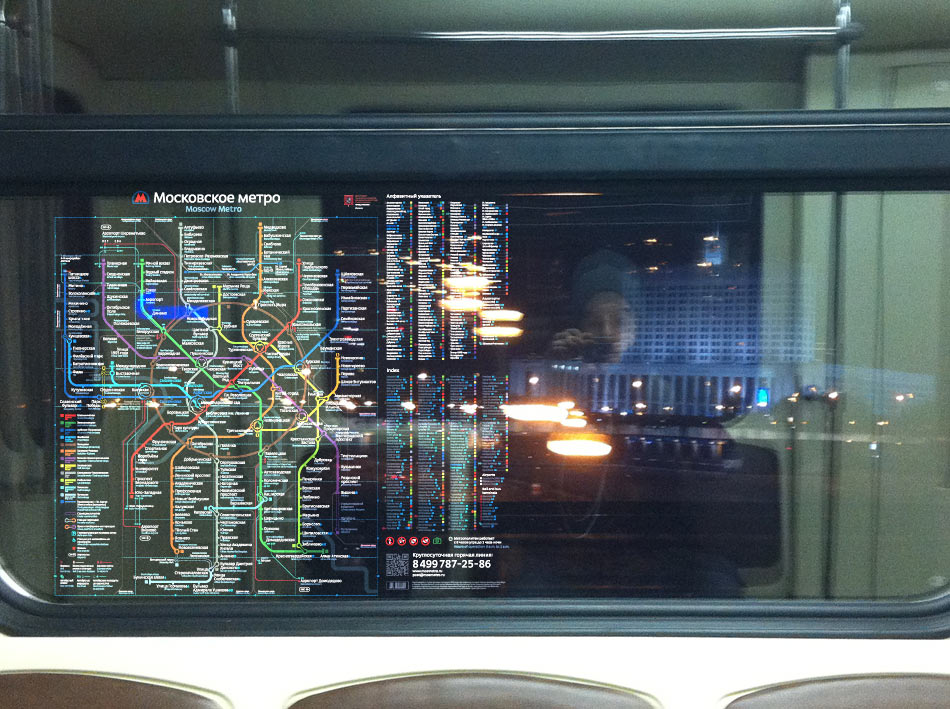
Map: the Kremlin, Aeroexpress train to airports, and the star
Running into a problem of the Kremlin and Aeroexpress icons as confusing.
Aeroexpress logo features five planes.

The logo itself delivers the message just fine, but scale it down and you will get a star. There’s no version of the logo adapted for such size and the connection to airplanes vanishes in micro format.
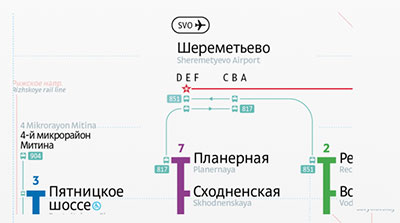
Fighting to save it. For instance, we drew several other Kremlins, including some with onion-dome.
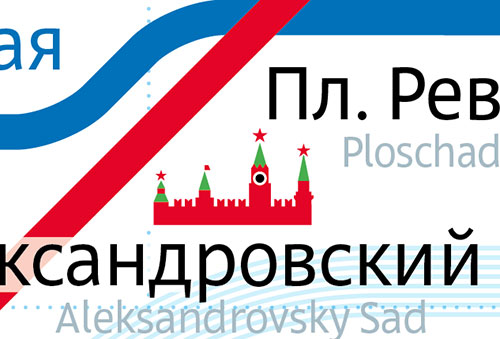
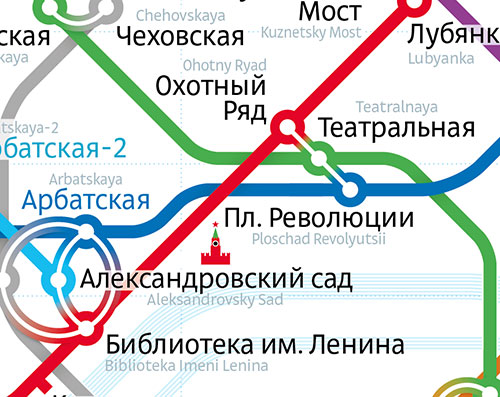
For a while, the map looked like this (notice the Kremlin’s Spasskaya Tower and Aeroexpress logo by the rail terminals.):
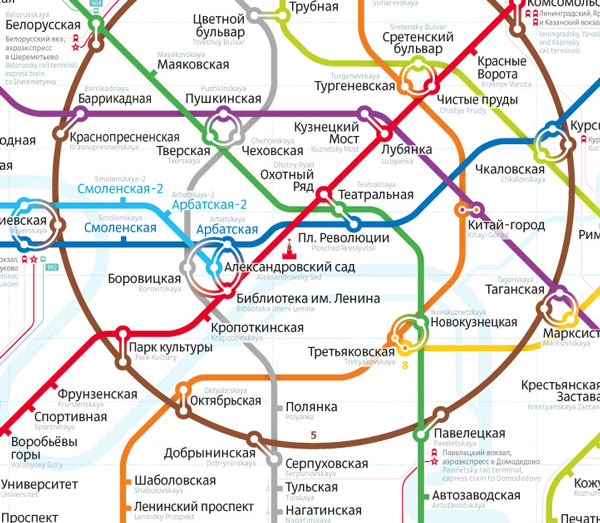
The more we work on it, the more it sticks out: the map shows several confusing stars Stalin’s Skyscrappers-style, the rail terminals have no airplanes, and there’s an icon by Aleksandrovsky Sad that turns the whole thing into some Lubok folk art.
Deciding to place clear airplane icons by the rail terminals and a star at the heart of the capital to grow it into a new tourist symbol.
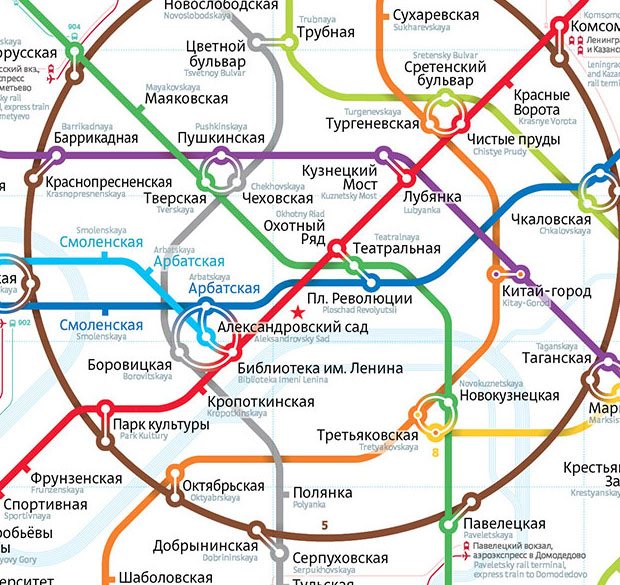
Star is good, the city’s got a star, be bold to use it. Things like that are best executed boldly, in a year it’d be proved as the right decision: the Kremlin—star—downtown.
The legend also benefits from this addition as rail and buses are now lined up in a clean order.
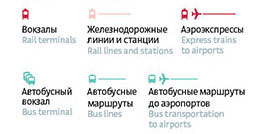
Rail hubs are marked by a train and airplane, bus end of lines feature a bus and airplane.
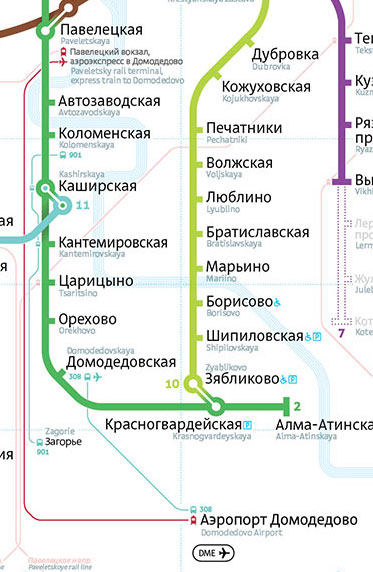
Airports also did not loose anything, it’s still clear: here’s a train from the airport and here’s a bus.
Icons for handicap
Now is the handicap icon’s turn. Making sure it has the same visual density as the parking icon.
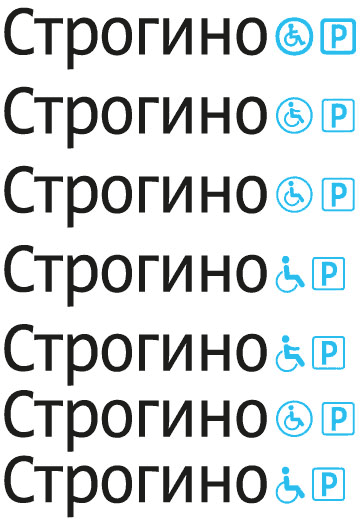
Final version:

Pictograms
Sieving through the list of rules to pick a few worthy of illustrating. For example, it’s kind of too late to inform a person, who’s physically at a metro car or on a platform, that he’s not supposed to bring his bike underground. It’s also aimless to illustrate the rule that forbids carrying weapons in metro as this’s not allowed in most public places.
Making our selection of the following rules to illustrate: no drinking alcoholic beverages, no smoking, no video, no private ads placement, no begging, and one go-for-it rule most people don’t know about: it’s ok to take photos. The no begging rule gets a funny twist in Yegor Zhgun’s picture of Honest John and Gideon from the Russian version of Pinocchio.
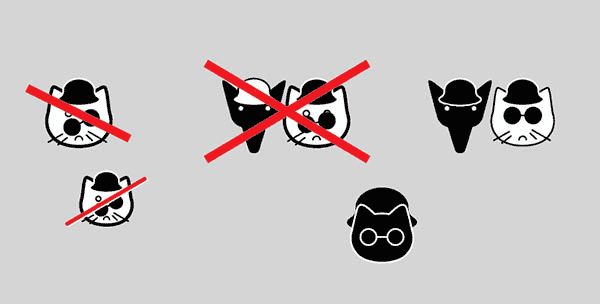
Only some tourists, say, from Tokyo, might read it as “all fat dudes with whiskers, round glasses, and ridiculous bowler hat must drop dead here and now.” The pictogram turns out to be useless anyway, since all beggars in Moscow metro are not immatures, but professionals, and what’s needed to get rid of them is some administrative initiative.
Ending ip with five pictograms and the clocks slash check mark.

Combining it all with the metro car map.
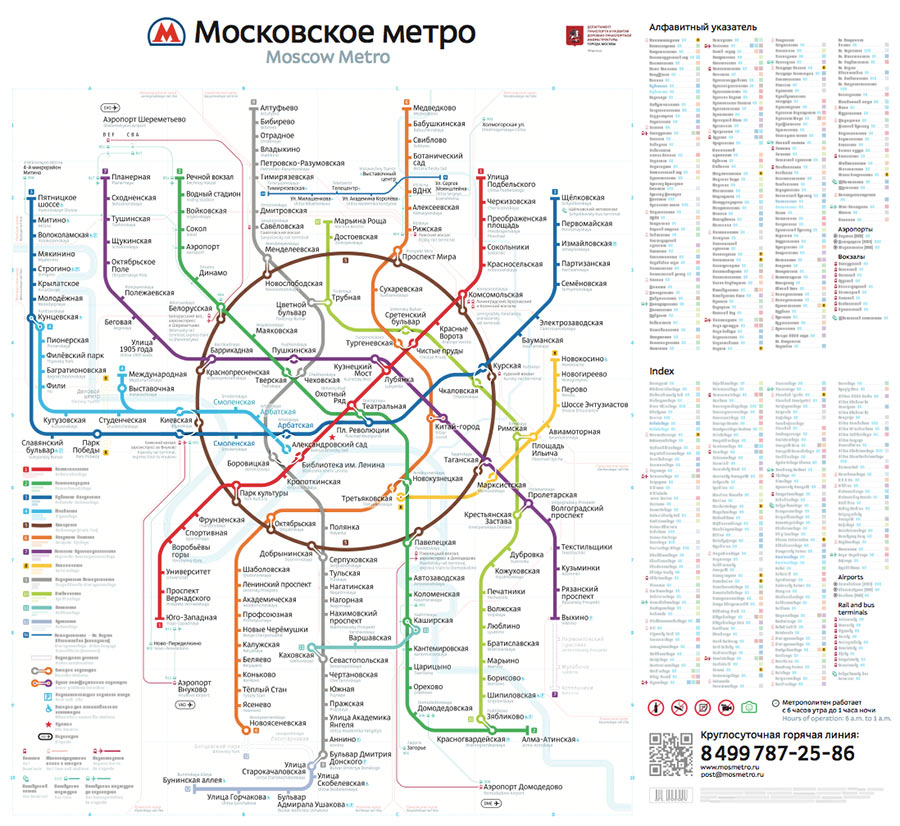
Preparing the files for the press.
Going through the first round of color test.
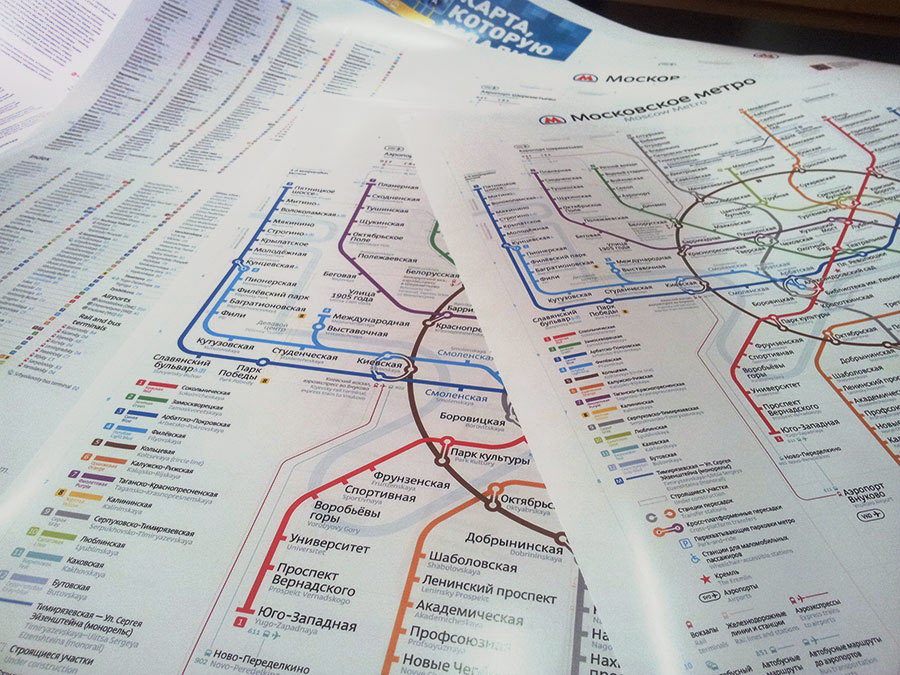
Catching some bugs and communicating it to the printers.
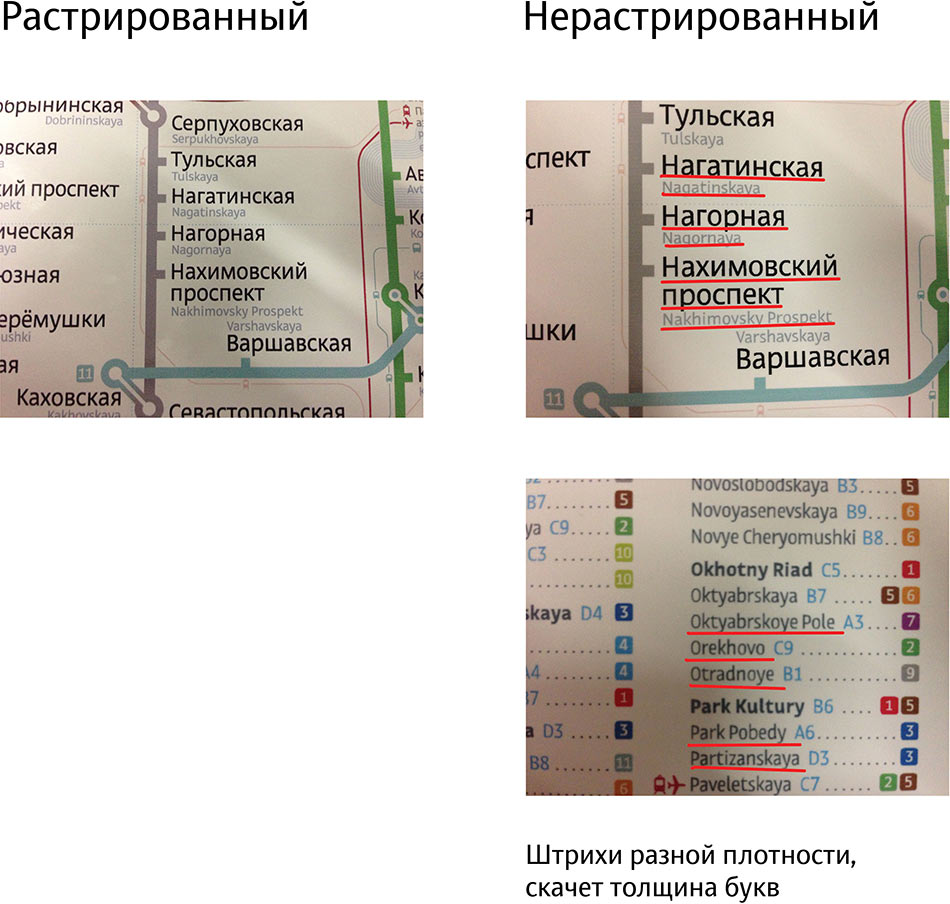
Second color test. Adjusting the red. (The color-blind better identify it when it has a lot of underlying hot pink, though it looks quite bizarre for people without color challenges.) Getting the corrected files approved for the press.
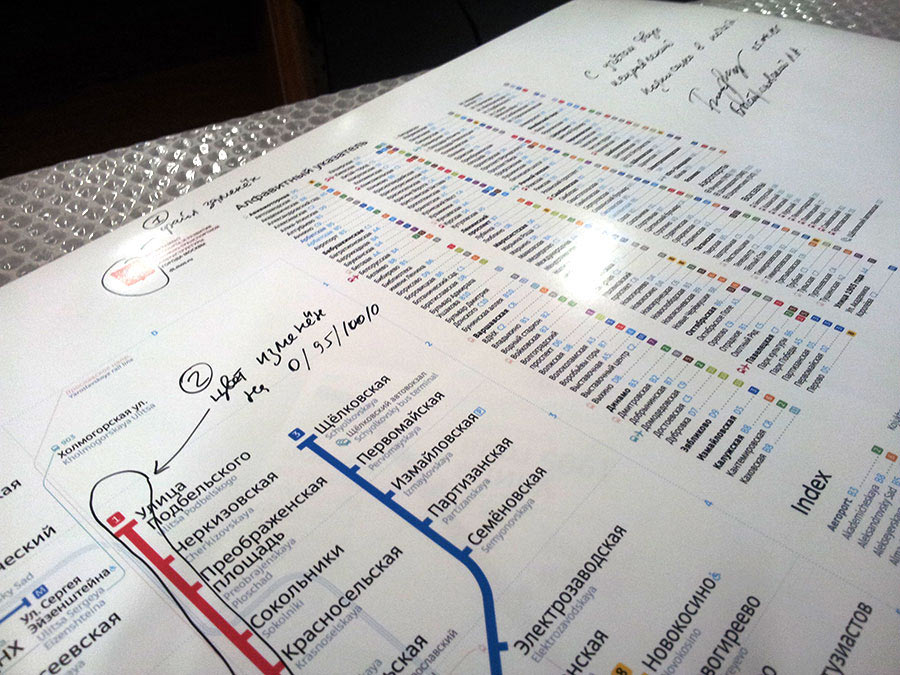
The map evolution in forty images:
